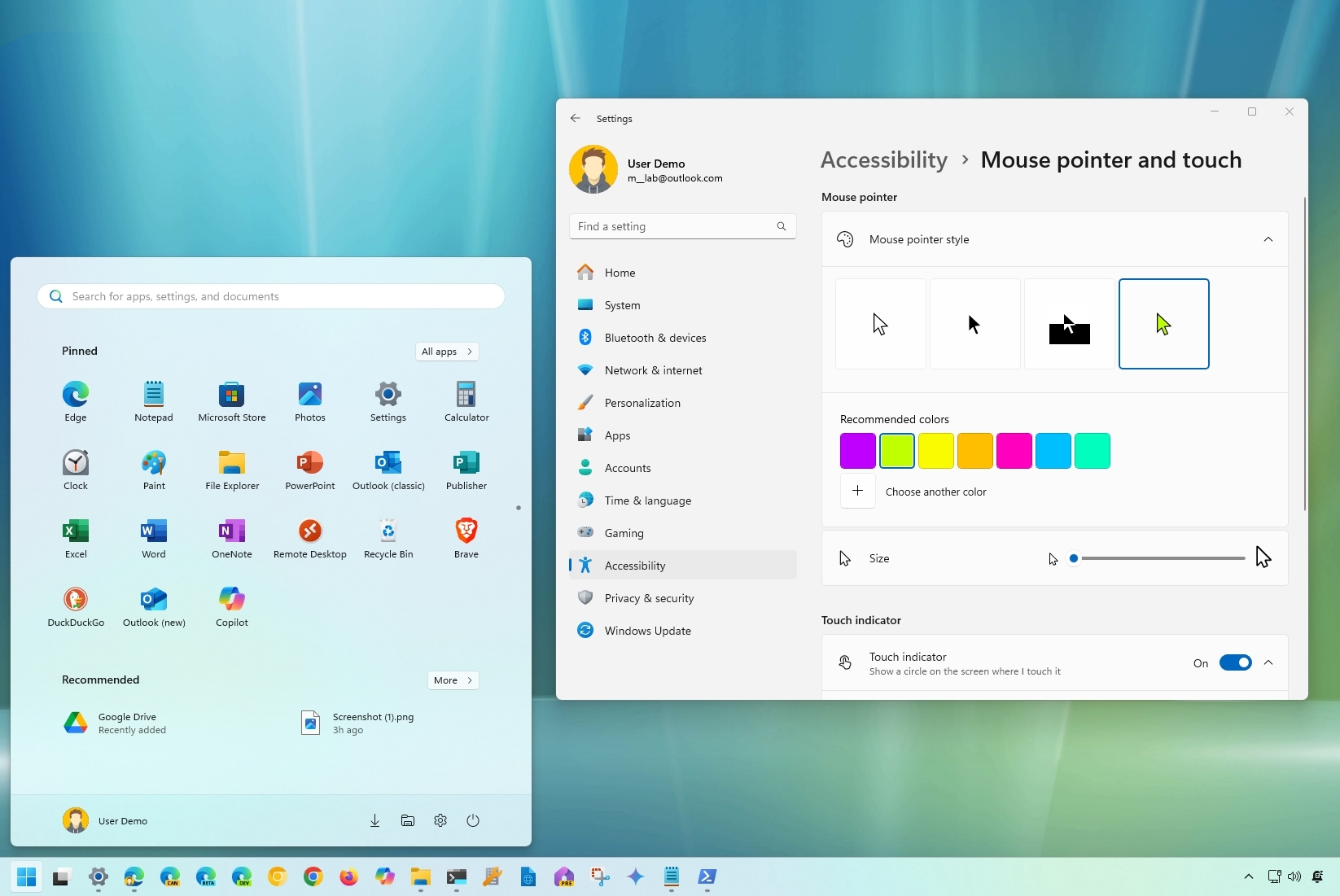
In my tech-savvy journey, I’ve found that tailoring Windows settings to suit my preferences not only makes my computing experience more enjoyable but also more efficient. One such customization I always perform is setting File Explorer to start on “This PC” and display file extensions. Here’s how:
One standout feature of Windows 11 is its versatility, allowing users to customize various aspects of their experience with multiple options. However, it’s important to note that not all aspects can be tailored freely due to changes made by the company; certain elements like the Taskbar have become more limited in customization.
Because the operating system provides numerous customization options to suit your unique requirements, such as tweaking system settings and designing your desktop to your liking, I’d like to walk you through the adjustments I typically make when installing a fresh copy.
Some of these include customizing the Start menu pins and shortcuts and changing some Taskbar settings to make it more usable while removing some clutter. I will show you some alternative ways to configure widgets and notifications and explain why you should change the time and date settings to allow the system to configure these features automatically.
Additionally, I examine certain applications, screen layouts, privacy options, and personalized settings – such as those for File Explorer, mouse controls, and mobile devices.
This step-by-step tutorial demonstrates the usual adjustments I make on my Windows 11 operating system equipped devices.
Windows 11 settings to change on new setups
In each setup, I often tailor multiple aspects of the system, including the Start menu, taskbar, widgets, notifications, clock, applications, display settings, privacy options, mobile device connections, mouse preferences, and file navigation.
Start menu
In my Start menu, I’d rather display more pinned items than suggestions, place additional shortcuts near the power button, and turn off certain notifications instead.
Show more pins
To show more pins rather than more recommendations, use these steps:
- Open Settings.
- Click on Personalization.
- Click the Start page on the right side.
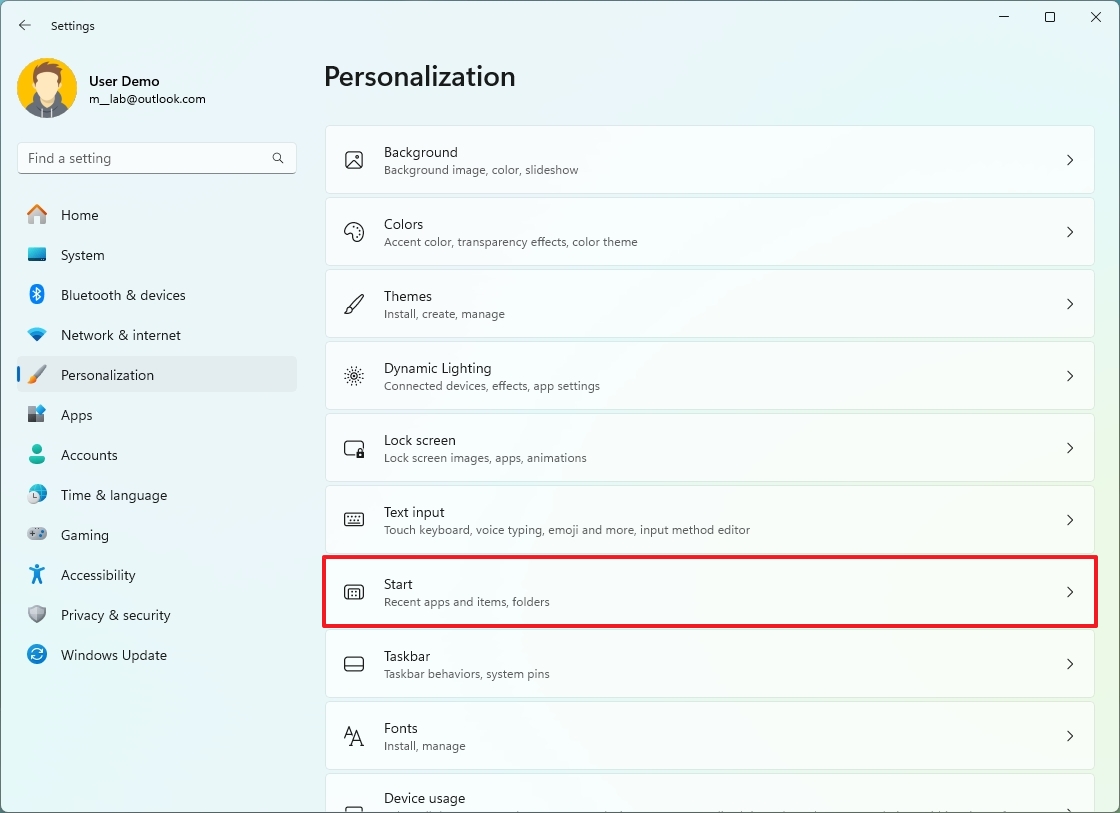
- Select the More pins option.
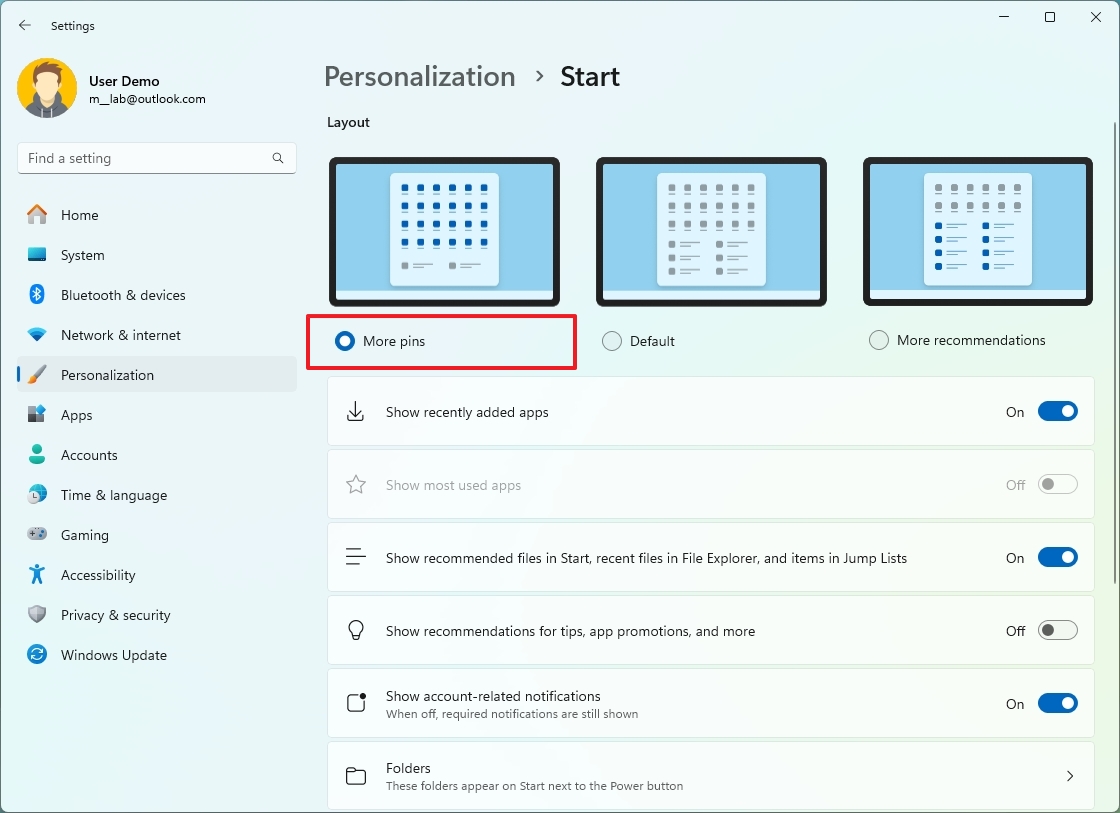
Once you complete the steps, the Start menu home will now show more pins than recommendations.
Show folders
To show folders (app shortcuts) in the Start menu, use these steps:
- Open Settings.
- Click on Personalization.
- Click the Start page on the right side.

- Click the Folders setting.
- Choose the shortcuts to appear in the menu next to the power button. For example, Settings, File Explorer, and Downloads.
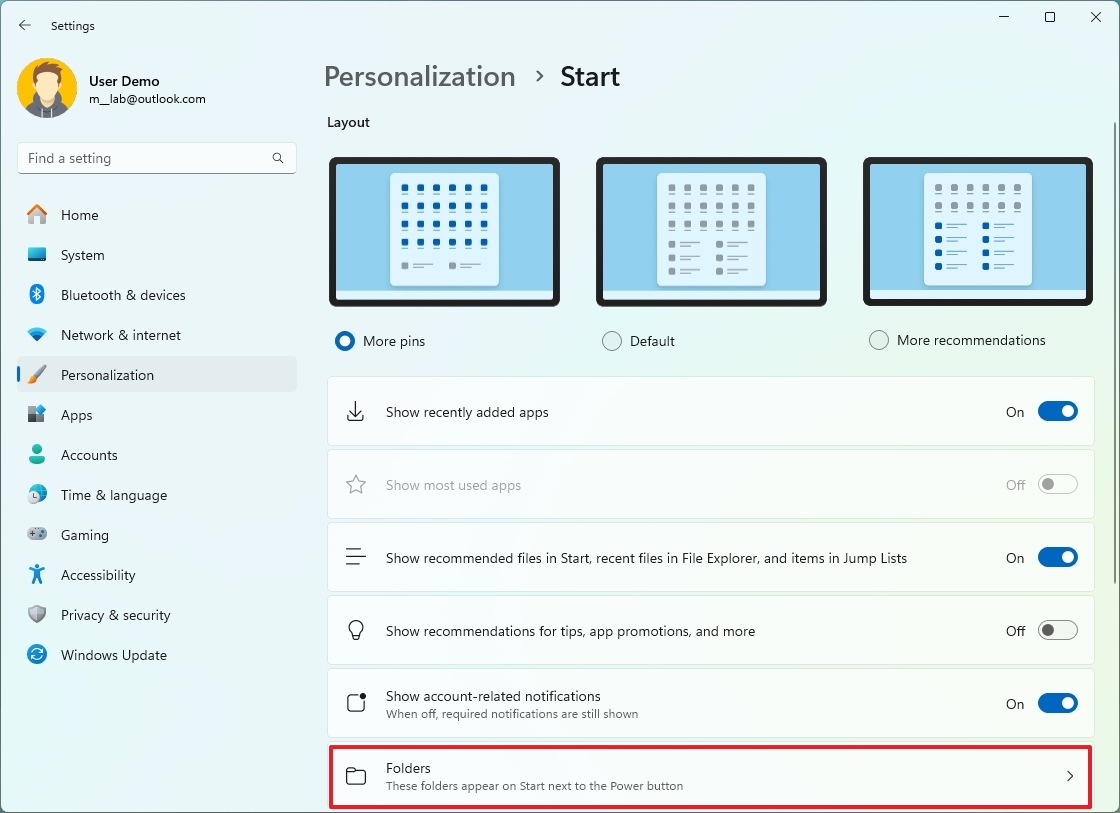
After you complete the steps, the shortcuts will appear next to the power button.
Disable account notifications
To prevent the Start menu from showing unwanted notifications, use these steps:
- Open Settings.
- Click on Personalization.
- Click the Start page on the right side.

- Turn off the “Show account-related notifications” toggle switch.
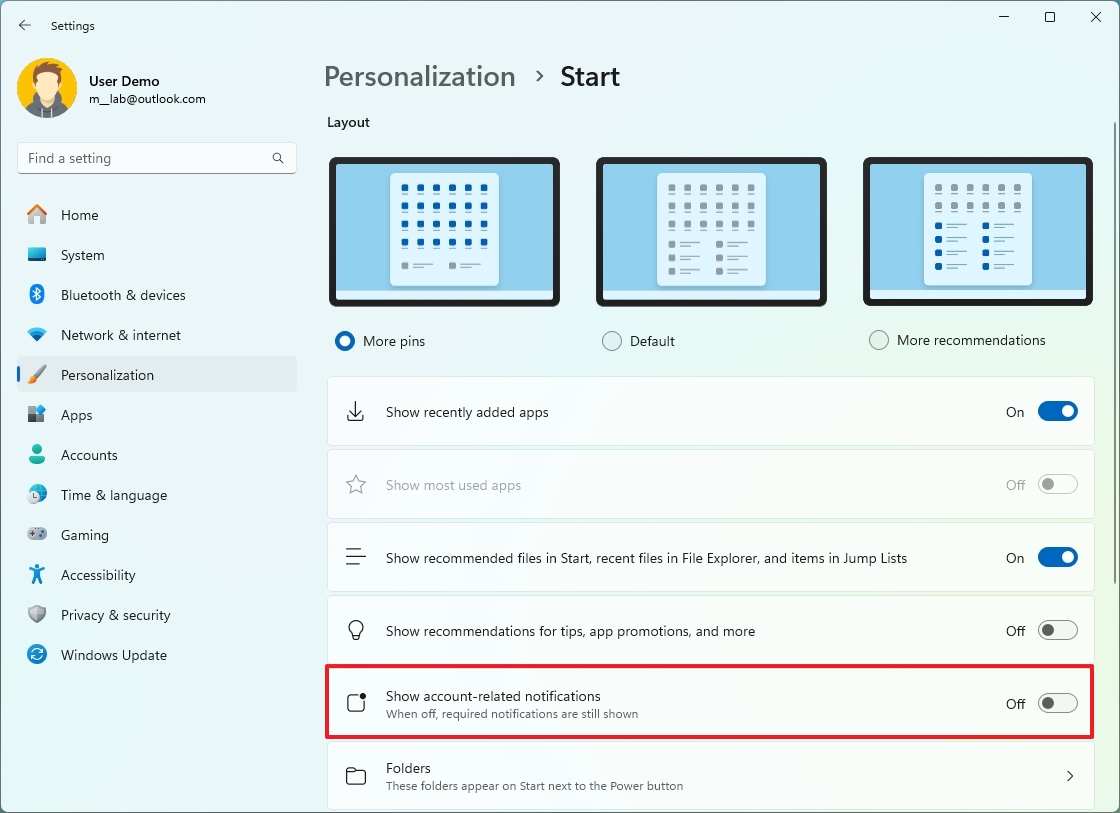
After finishing the required steps, the account manager interface will no longer display bothersome alerts regarding your account or offers.
Disable app recommendations
To turn off app recommendations from the Microsoft Store in the “Recommended” section, use these steps:
- Open Settings.
- Click on Personalization.
- Click the Start page on the right side.

- Turn off the “Show recommendations for tips, app promotions, and more” toggle switch.
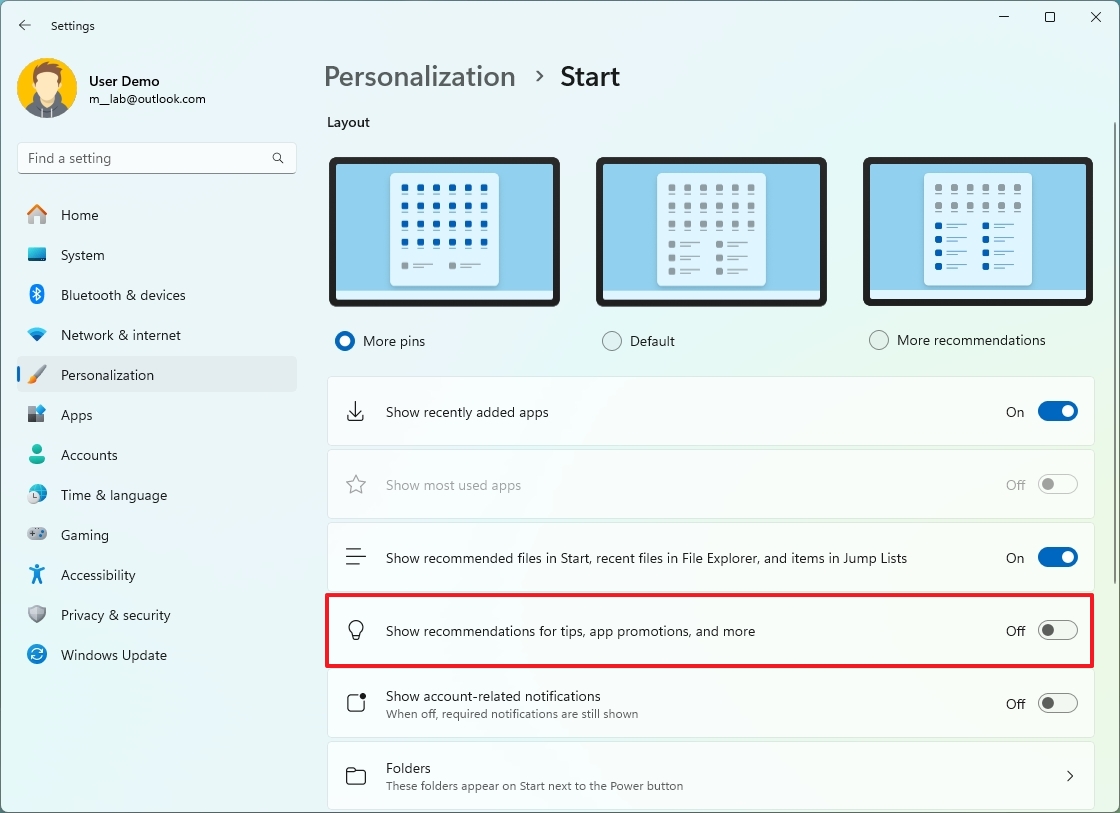
After you complete the steps, the Start menu will no longer promote apps from the Microsoft Store.
Taskbar
On my taskbar, I like to position the icons towards the left, eliminate widgets and search options, and usually turn off badge notifications to reduce distractions.
Change icon alignment
To align apps and the Start button to the left side, use these steps:
- Open Settings.
- Click on Personalization.
- Click the Taskbar page on the right side.
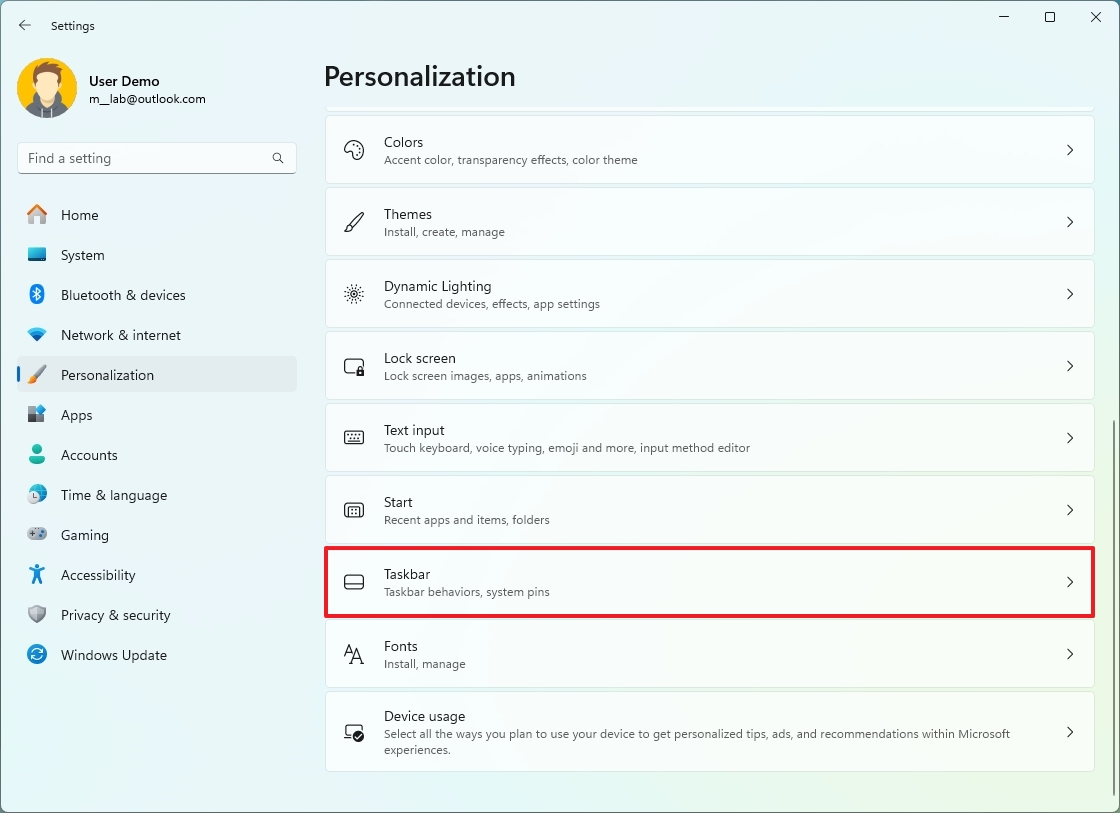
- Click the Taskbar behaviors setting.
- Choose the Left option for the “Taskbar alignment” setting.
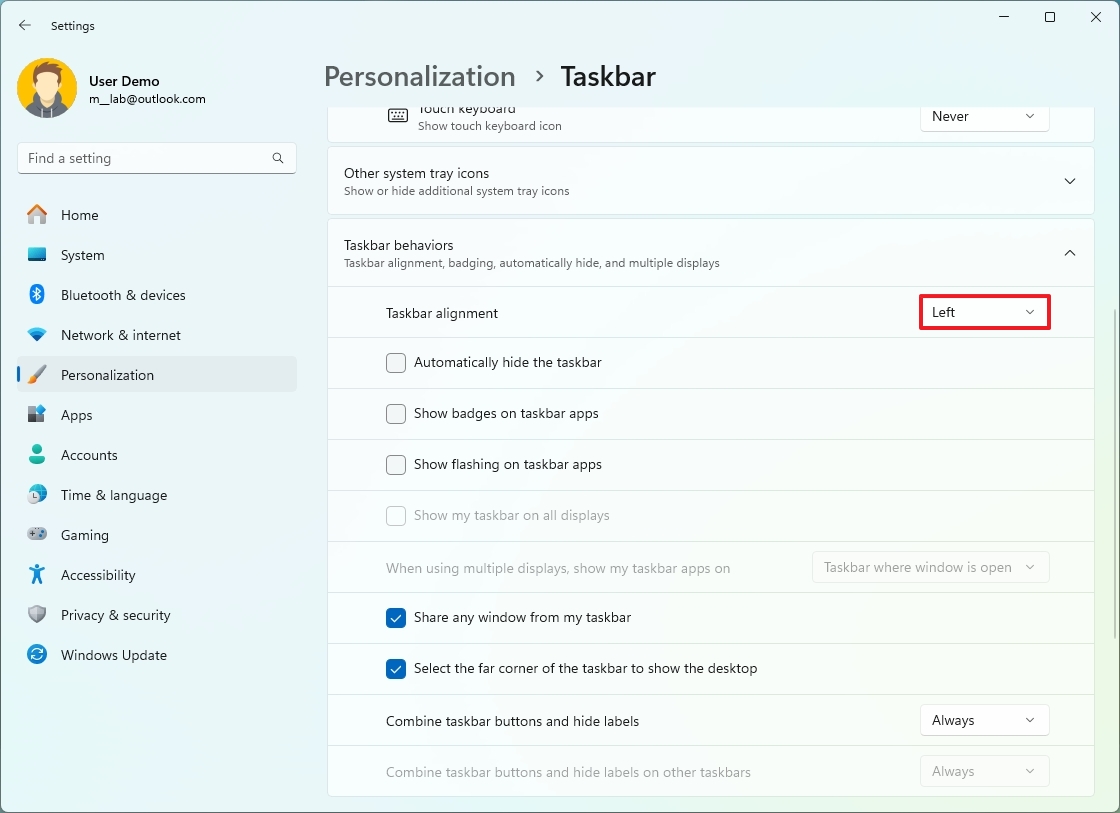
After finishing the process, the Start button and app symbols will now be lined up on the left side, just as they were in earlier iterations of the operating system.
Remove Widgets and Search icons
To remove the Widgets and Search icons from the Taskbar, use these steps:
- Open Settings.
- Click on Personalization.
- Click the Taskbar page on the right side.

- Choose the Hide option for the Search feature.
- Turn off the Widgets toggle switch.
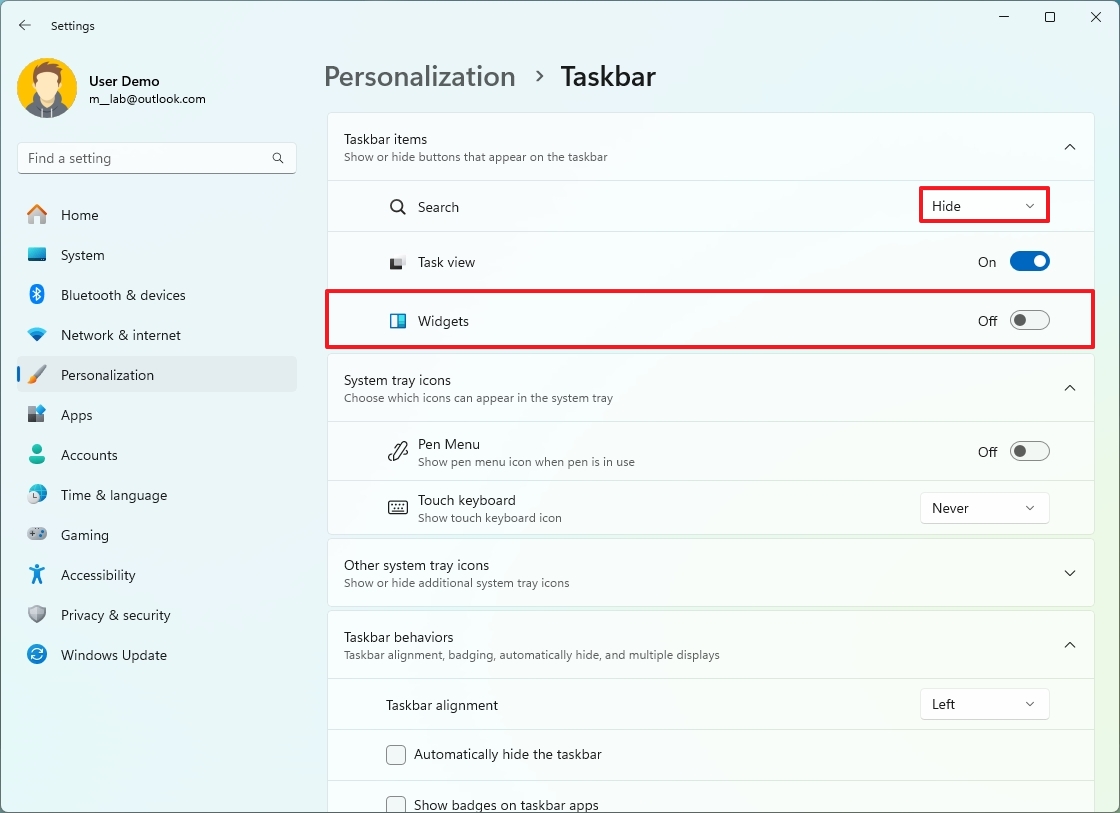
Once you’ve finished the steps, you will be able to perform searches either from the Start menu or by using the keyboard shortcut “Windows key + S“. Additionally, you can still open the Widgets board using the keyboard shortcut “Windows key + W“.
Disable badge notifications
To disable badge notifications in the Taskbar, use these steps:
- Open Settings.
- Click on Personalization.
- Click the Taskbar page on the right side.

- Click the Taskbar behaviors setting.
- Clear the “Show badges on taskbar apps” option.
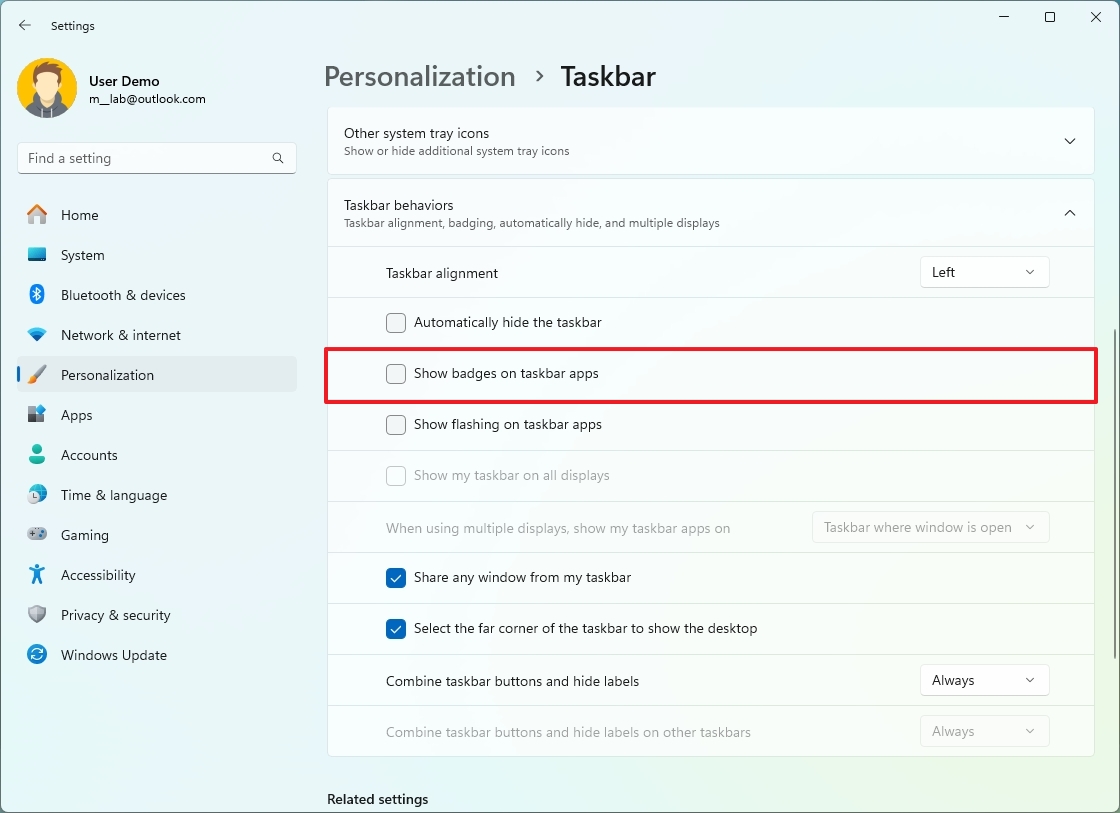
After following the given instructions, the app icons in your Taskbar will no longer display message count notifications.
Widgets
Besides eliminating the Widgets shortcut from the taskbar, I also disable the news feed to provide an unobstructed view of the widgets.
Disable news feed
To turn off the Widgets news feed, use these steps:
- Open Widgets (Windows key + W).
- Click on the Settings (gear) button.
- Click the “Show or hide feeds” setting.
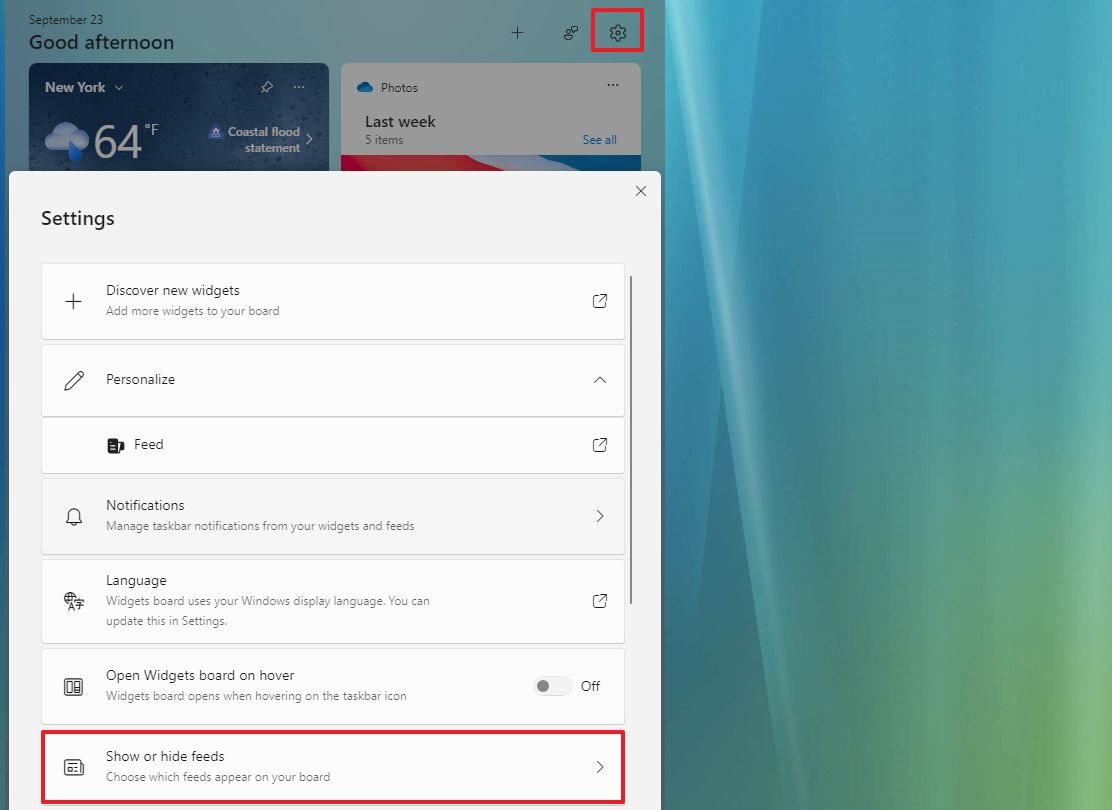
- Turn off the Feed toggle switch.
- Click the Turn off button.
After you complete the steps, the Widgets board will only show widgets.
Notifications
Instead of fully disabling the notification system for my configurations, I opt to turn on the “Do Not Disturb” feature to minimize interruptions by muting pop-up notifications. However, I still receive system and app notifications.
Enable Do not disturb
To enable “Do not disturb” on Windows 11, use these steps:
- Open Settings.
- Click on System.
- Click the Notifications page on the right side.
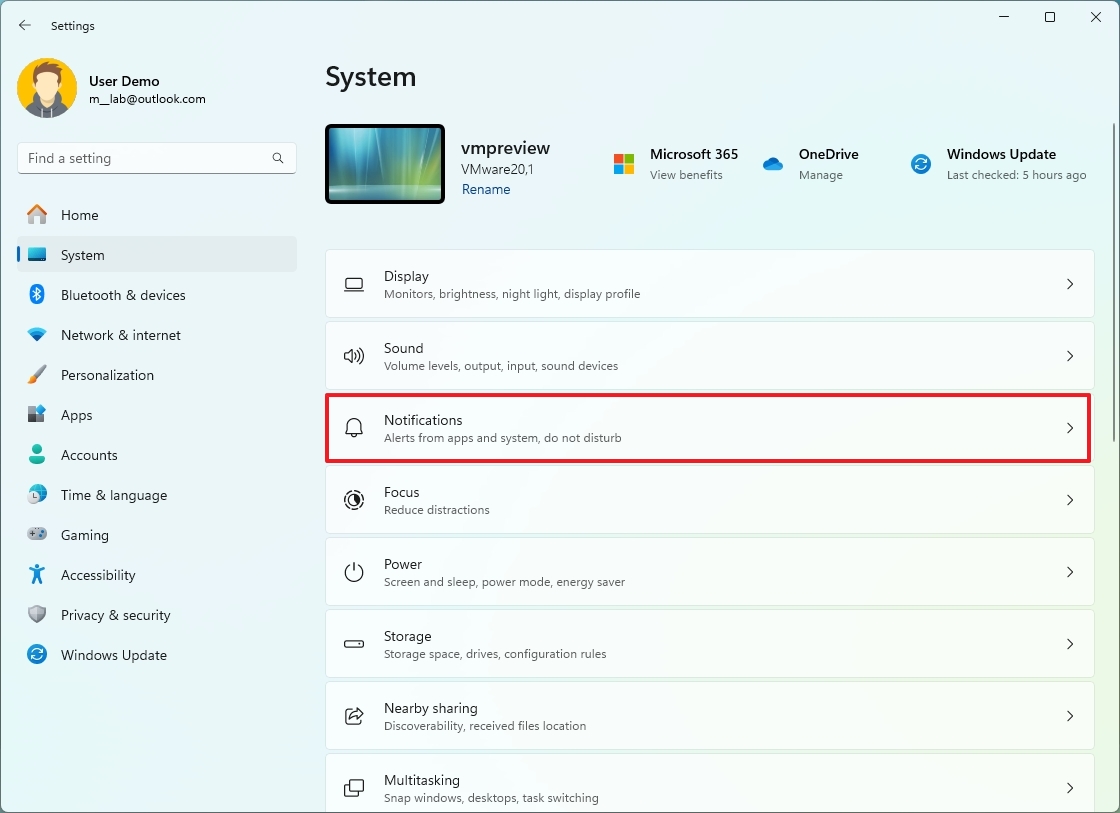
- Turn on the “Do not disturb” toggle switch.
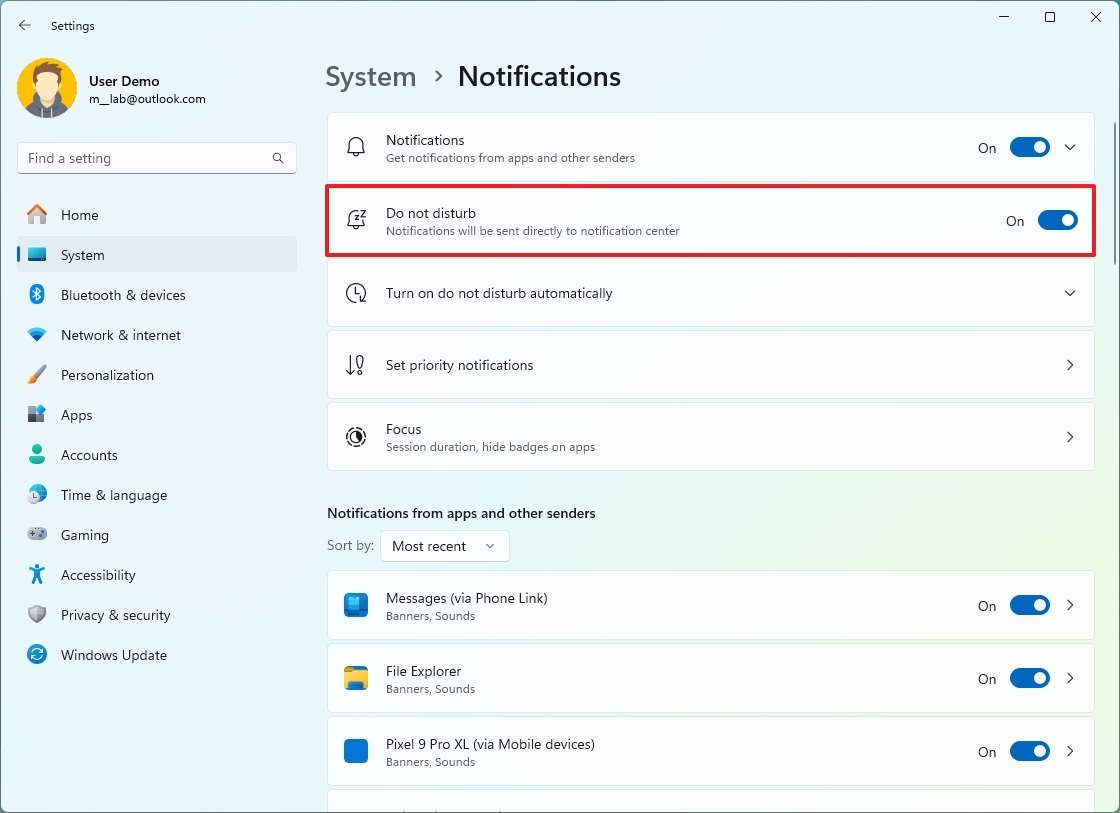
Upon finishing the outlined procedures, I’ll find that my notification system remains functional, yet I won’t be witnessing the appearance of toast messages or audible alerts each time a new notification arrives.
You can always click the time and date area in the Taskbar to access your notifications.
Clock
Even though the system usually handles setting the time zone, date, and clock automatically, there might be instances where you need to manually set these details due to potential synchronization issues, particularly when traveling to a different time zone. Yet, you can modify your settings so that the operating system can monitor and adjust these details automatically on its own.
Enable automatic time and zone
To allow Windows 11 to adjust the time zone, clock, and date automatically, use these steps:
- Open Settings.
- Click on Time & language.
- Click the Date & time page from the right side.
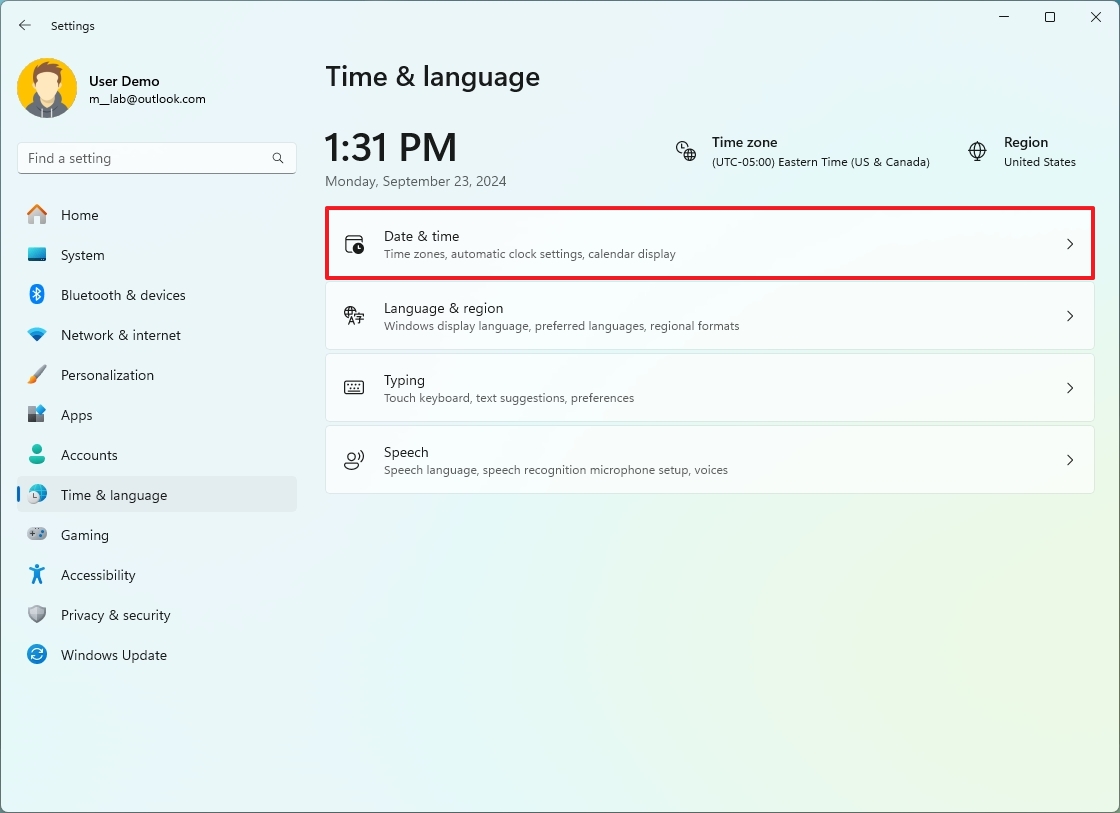
- Turn on the “Set time zone automatically” toggle switch.
- Turn on the “Set time automatically” toggle switch.
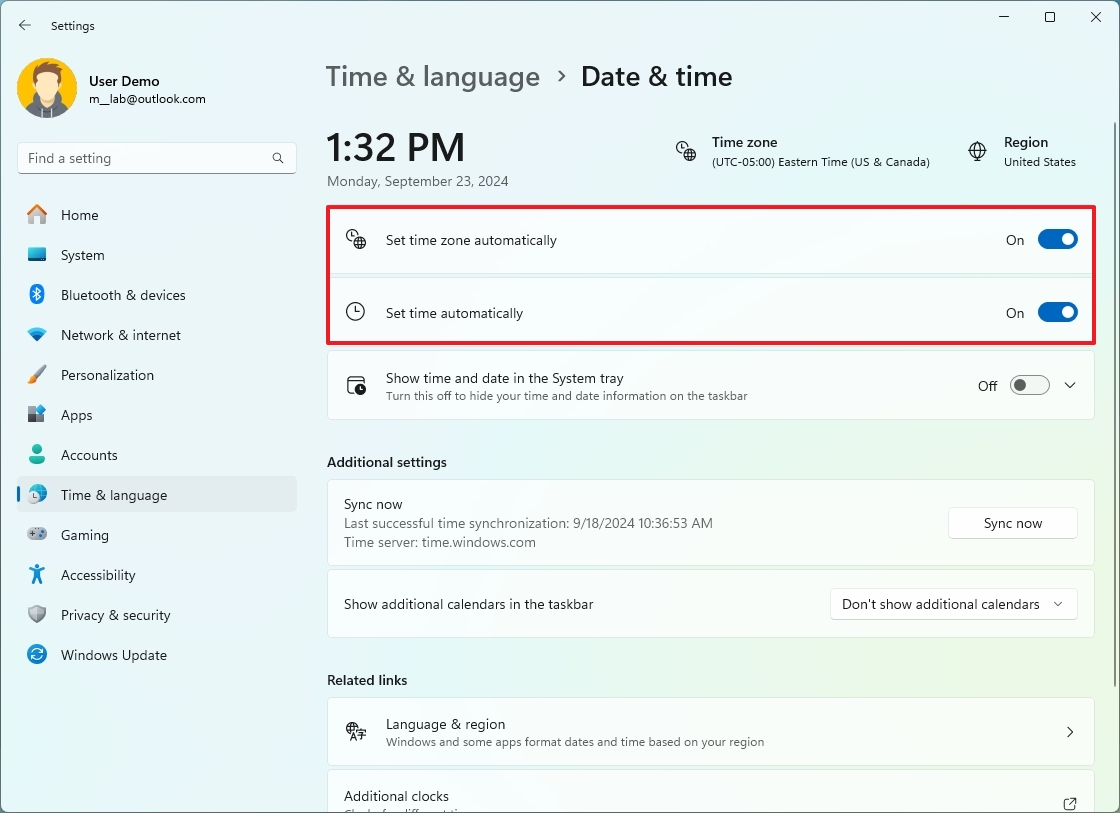
- (Optional) Click the Sync now button if the current time is out of sync.
After you complete the steps, the time zone and clock will sync automatically.
Apps
In terms of applications, I prefer to alter the default ones and deactivate unneeded programs from starting up automatically.
Set apps as default
To set an app as the system default on Windows 11, use these steps:
- Open Settings.
- Click on Apps.
- Click the Default apps page from the right side.
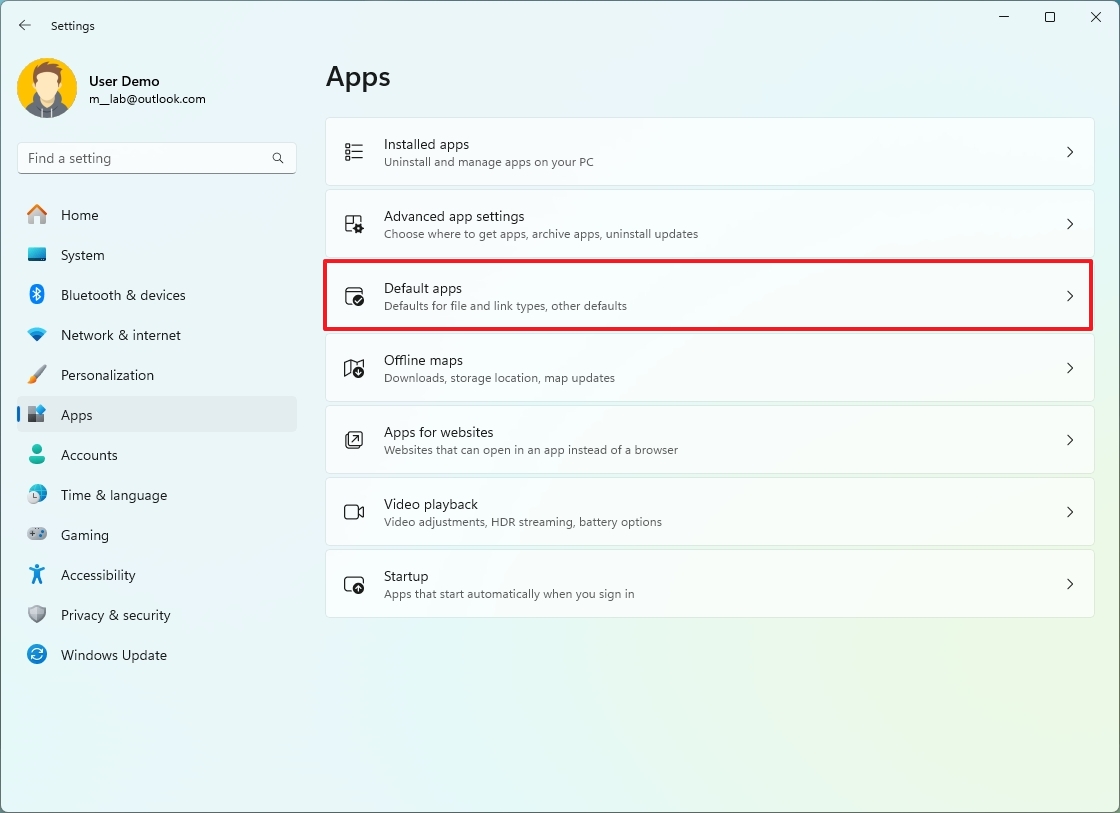
- Click on the app you want to make the default. For example, Google Chrome.
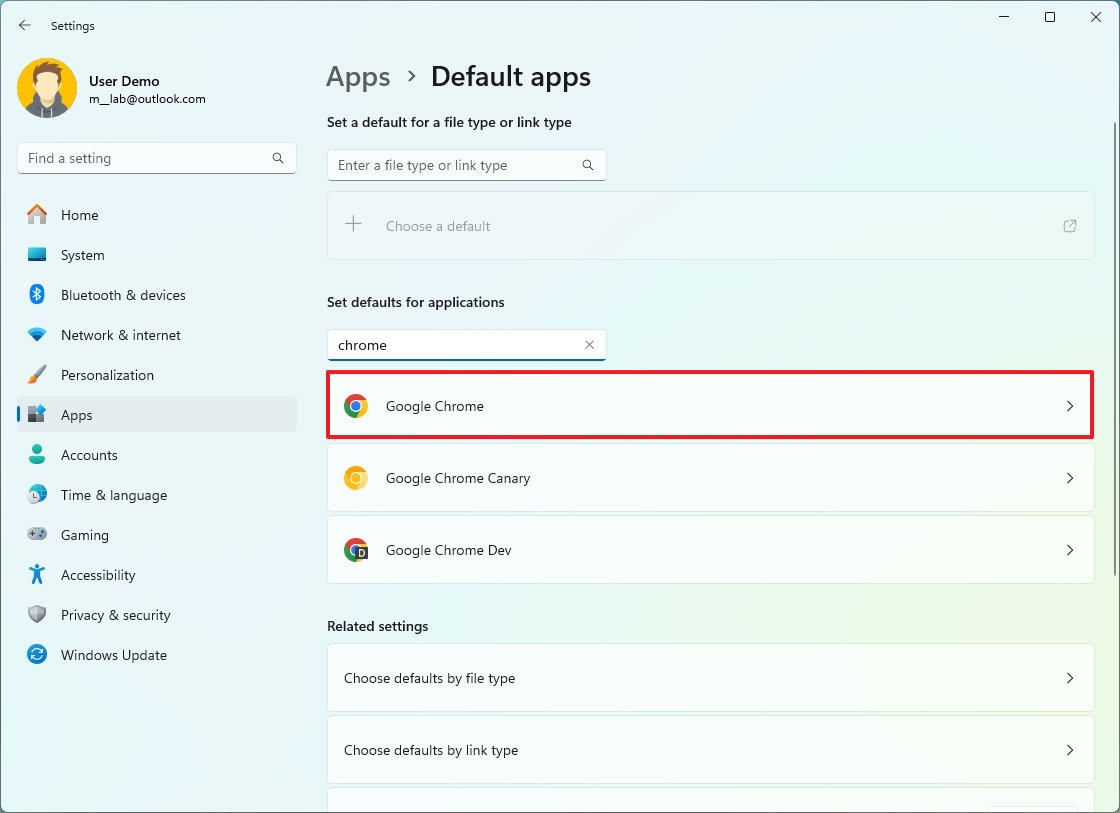
- Click the Set default option.
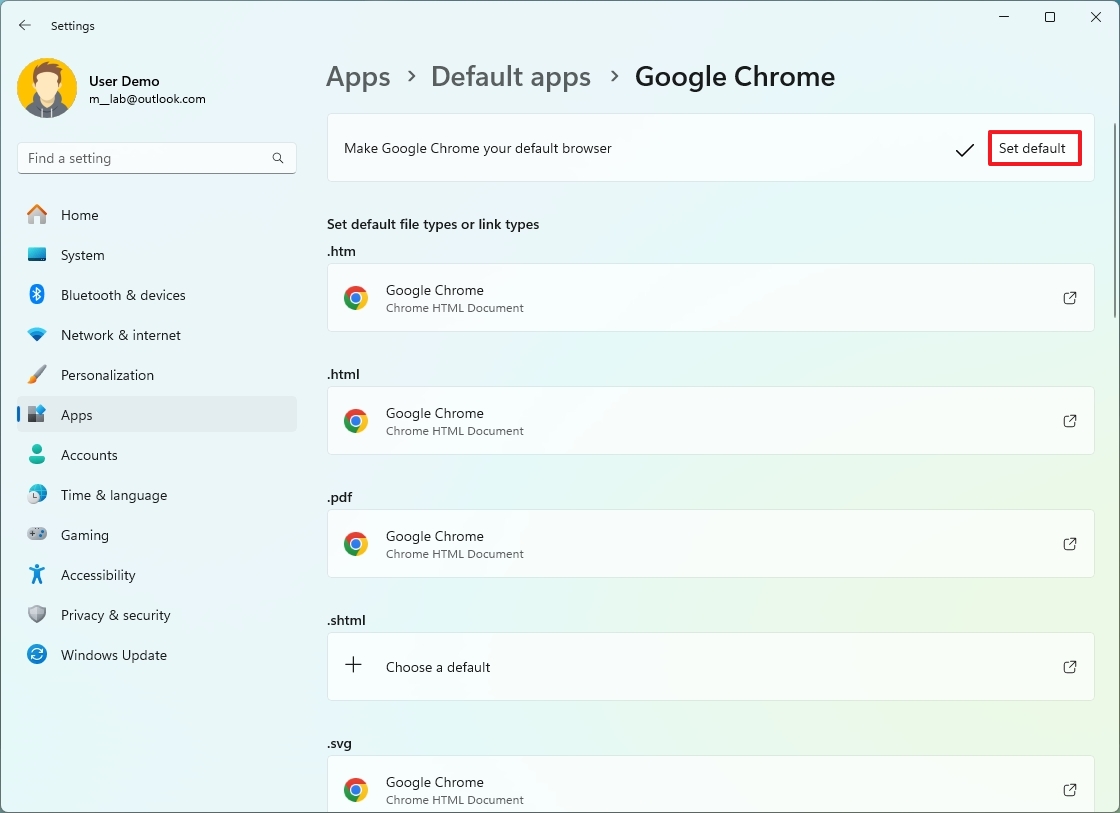
Once you complete the steps, the system will set the app you specified as the new default.
Control startup apps
To control apps at startup on Windows 11, use these steps:
- Open Settings.
- Click on Apps.
- Click the Startup page from the right side.
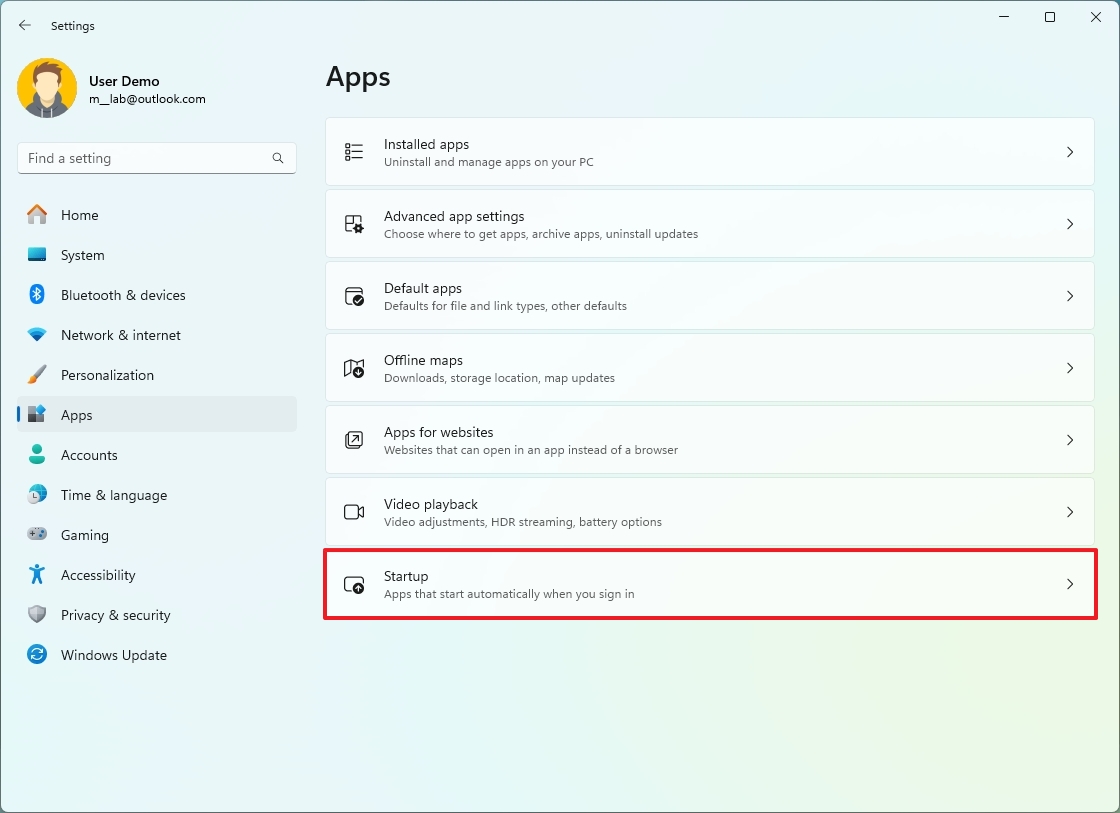
- (Optional) Choose the Startup impact option.
- Turn off the toggle switch for each of the apps you want to disable.
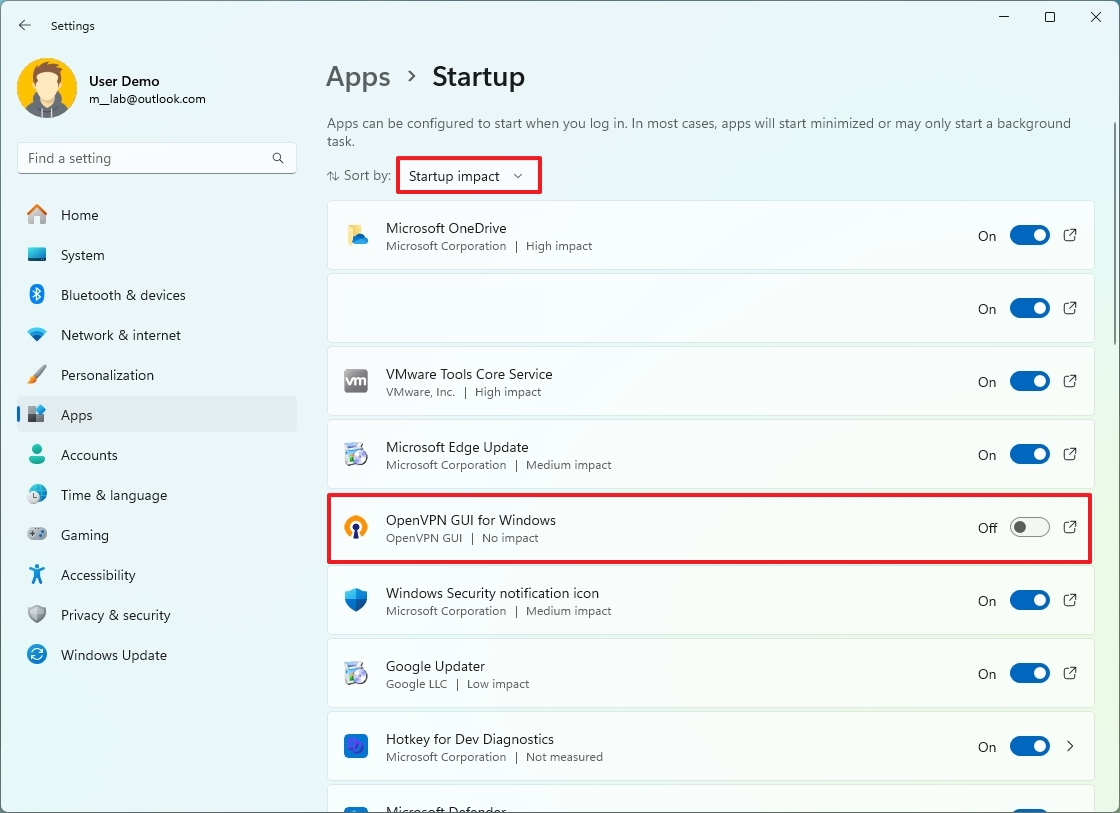
Typically, I seldom shut down the applications I regularly use, like OneDrive, Microsoft Defender, Mobile Devices, and so on, without turning them off.
Display
Regarding graphic settings, I primarily focus on adjusting the scale and refresh rate, as different monitors might not automatically set the ideal configuration by the operating system. Additionally, I prefer customizing the night light feature to minimize blue light emission. This is beneficial as extended exposure to blue light can cause eye strain and disrupt sleep patterns, particularly when using devices in the evening hours.
Typically, I find that Windows often sets the screen scale too large and fails to utilize the maximum refresh rate. While adjusting these settings might not be necessary for everyone, it’s wise to verify occasionally to ensure the optimal display configuration is in place.
Change screen scaling
To change the display scale setting on Windows 11, use these steps:
- Open Settings.
- Click on System.
- Click the Display page from the right side.
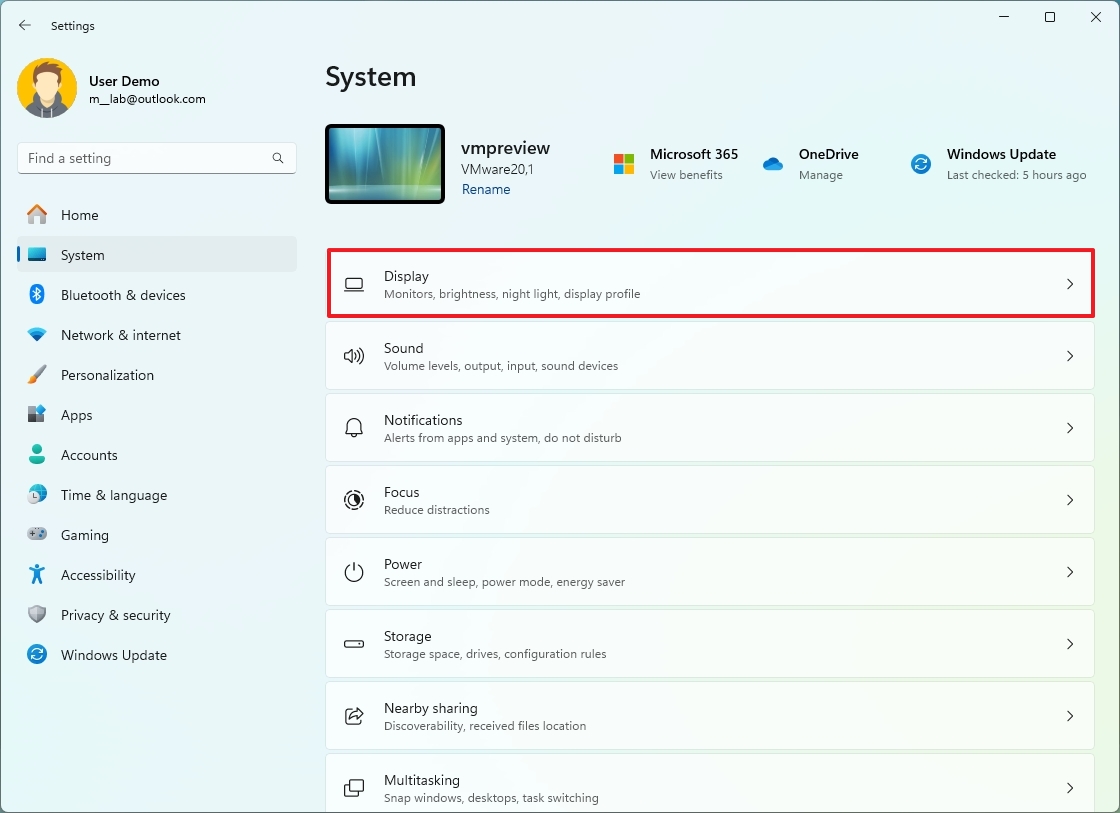
- (Option 1) Choose the desired scaling option in the “Scale & layout” setting.
- (Option 2) Click the Scale setting to specify a custom scaling size.
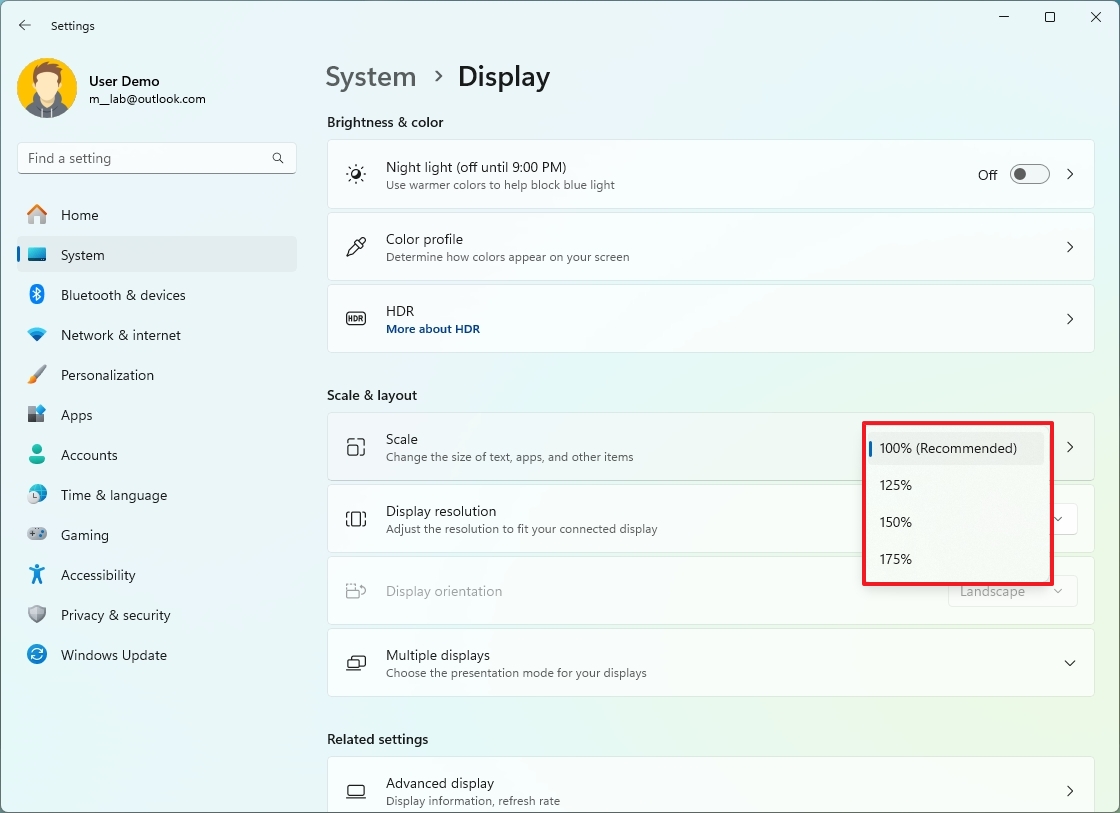
After you complete the steps, the display will use the scaling setting that is best for you.
Change refresh rate
To set the correct refresh rate on Windows 11, use these steps:
- Open Settings.
- Click on System.
- Click the Display page from the right side.

- Click the Advanced display setting.
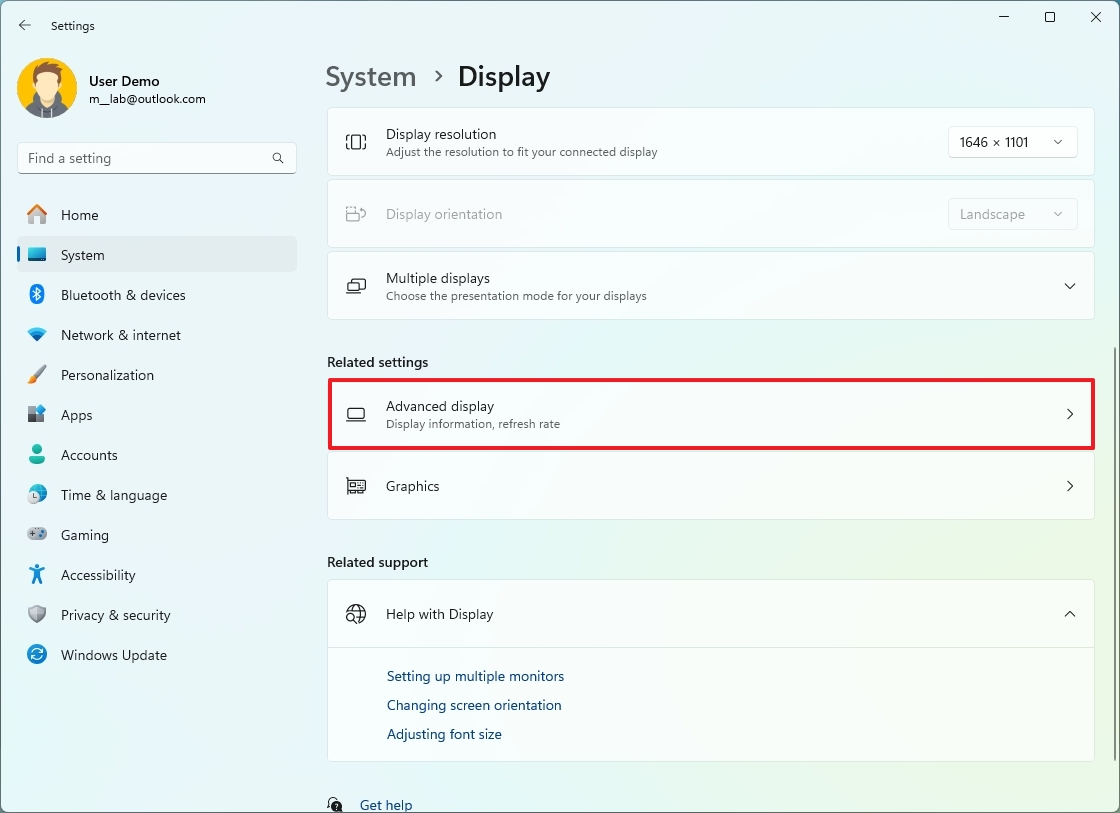
- Select the appropriate refresh rate according to the capabilities of your monitor.
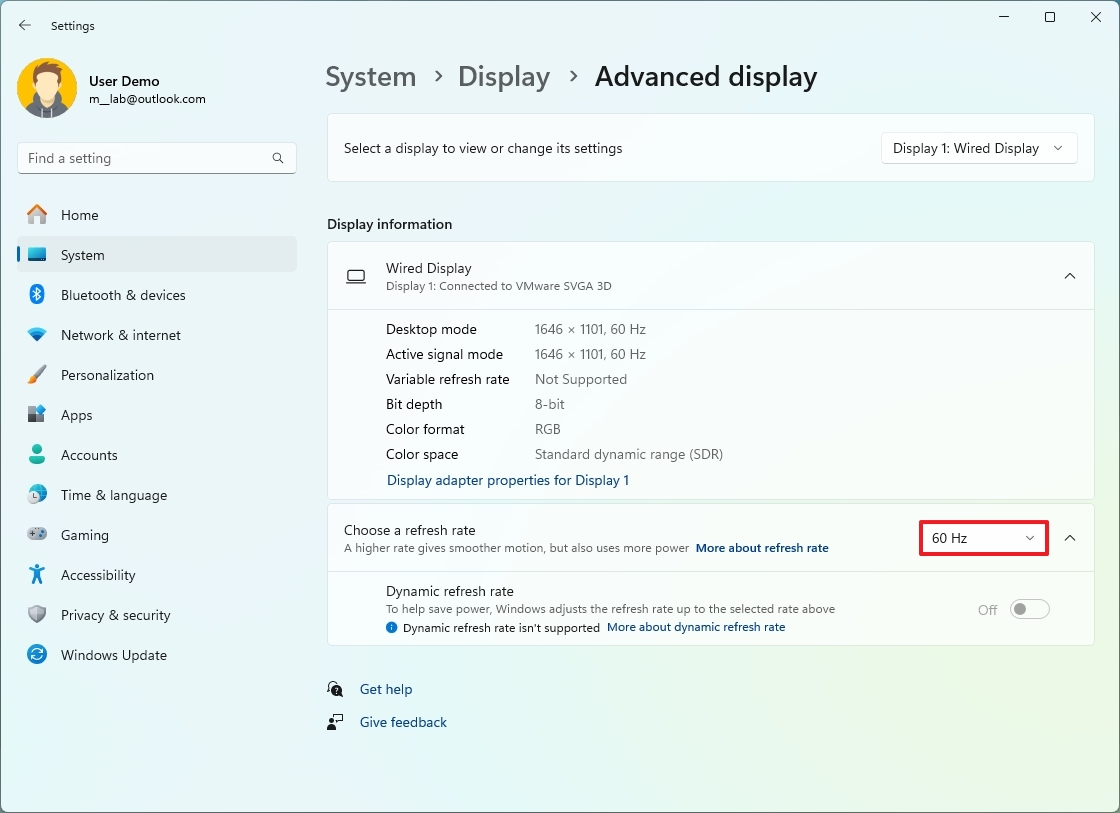
- (Optional) Turn on the “Dynamic refresh rate” feature if you want the system to adjust the refresh rate automatically to save energy.
Once you complete the steps, the monitor should start using the correct refresh rate.
Enable Night light
To enable the Night light feature on Windows 11, use these steps:
- Open Settings.
- Click on System.
- Click the Display page from the right side.

- Click the Night light setting.
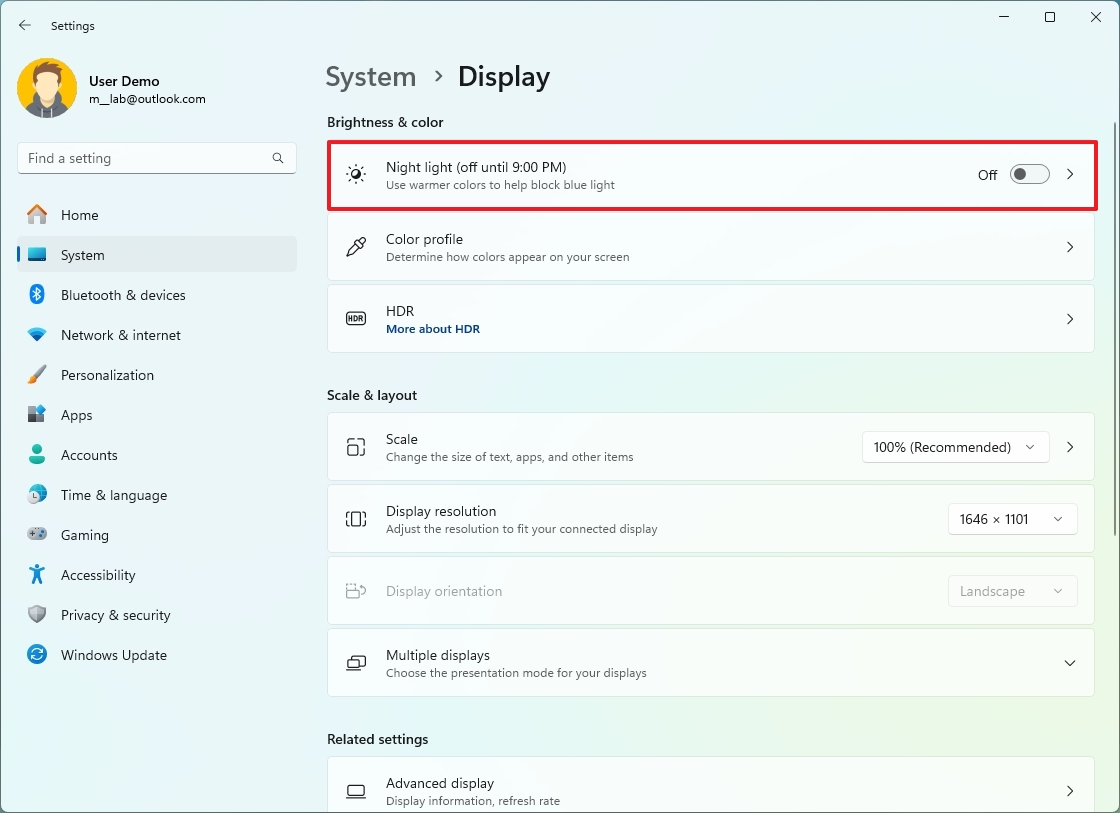
- Choose the blue light filter strength with the slider.
- Select the “Schedule night light” setting.
- Turn on the toggle switch to enable the schedule.
- Choose the “Sunset to sunrise” option.
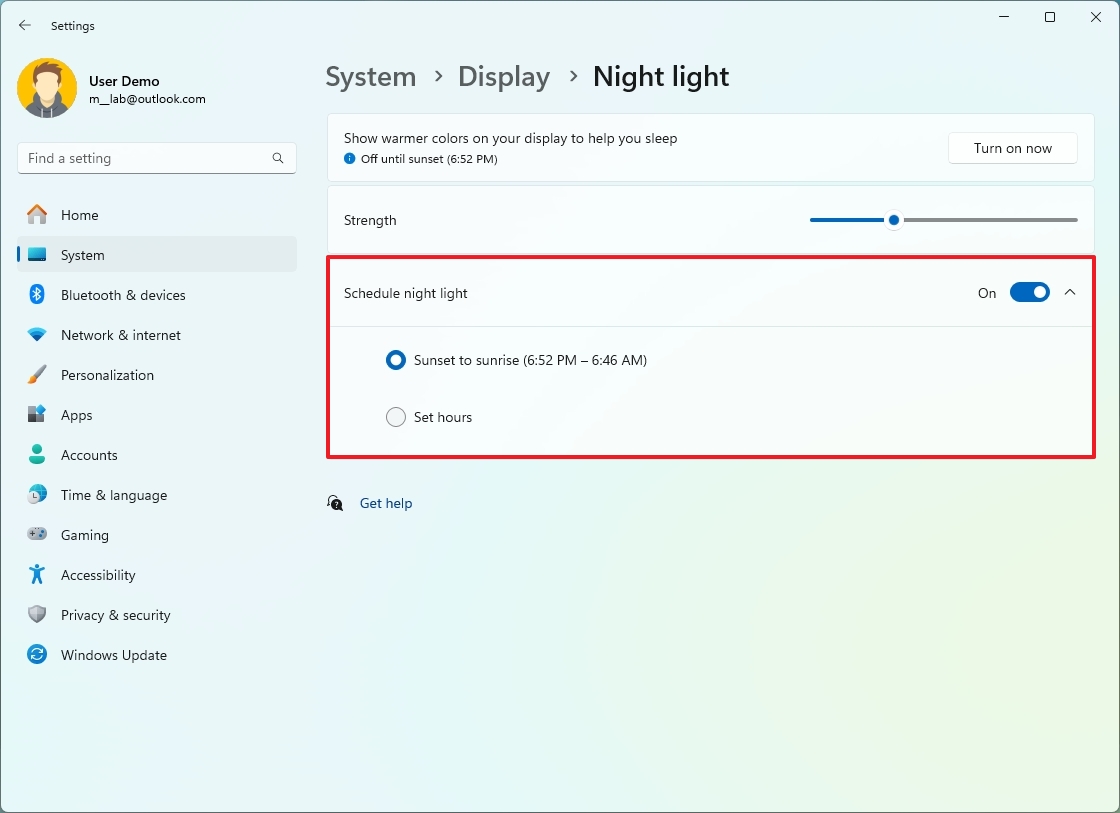
Once you’ve finished the process, the Night Light function will automatically activate at dusk and deactivate at dawn.
Privacy
Privacy is a complex topic, depending on who you ask. As part of my base configuration, I usually turn off the “Find My Device” feature to prevent storing location data in the Microsoft servers and disable notifications in the Settings app to minimize distractions.
Disable Find My Device
To disable the Find My Device feature on Windows 11, use these steps:
- Open Settings.
- Click on Privacy & security.
- Click the Find my device page from the right side.
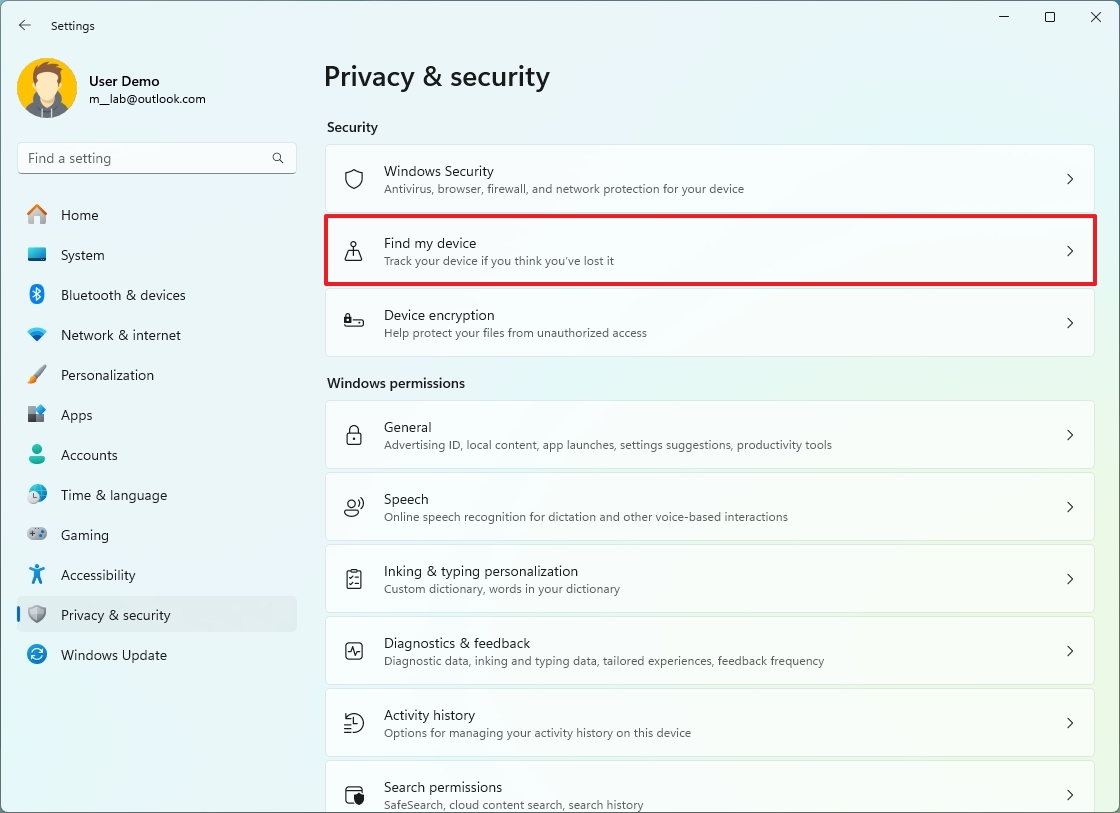
- Turn off the “Find my device” toggle switch.
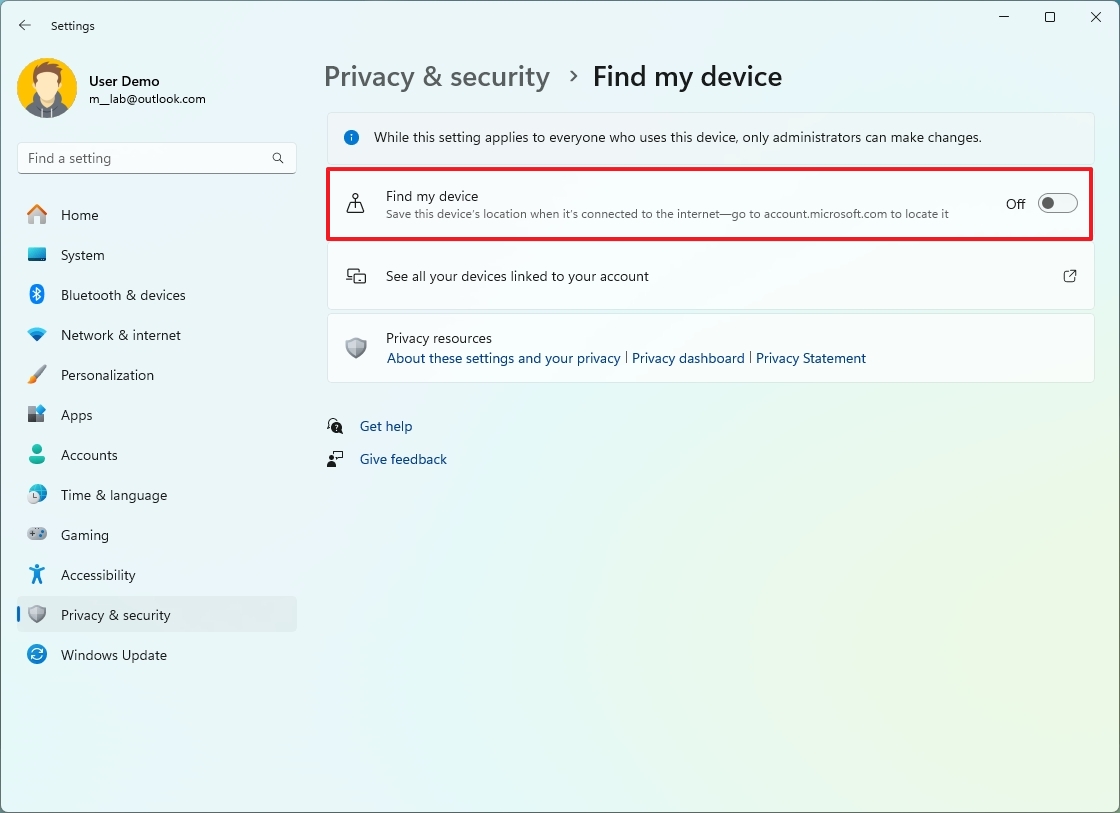
Once you complete the steps, the device will no longer send the location information to Microsoft.
Disable Settings notifications
To disable the Settings app notifications, use these steps:
- Open Settings.
- Click on Privacy & security.
- Click the General page from the right side.
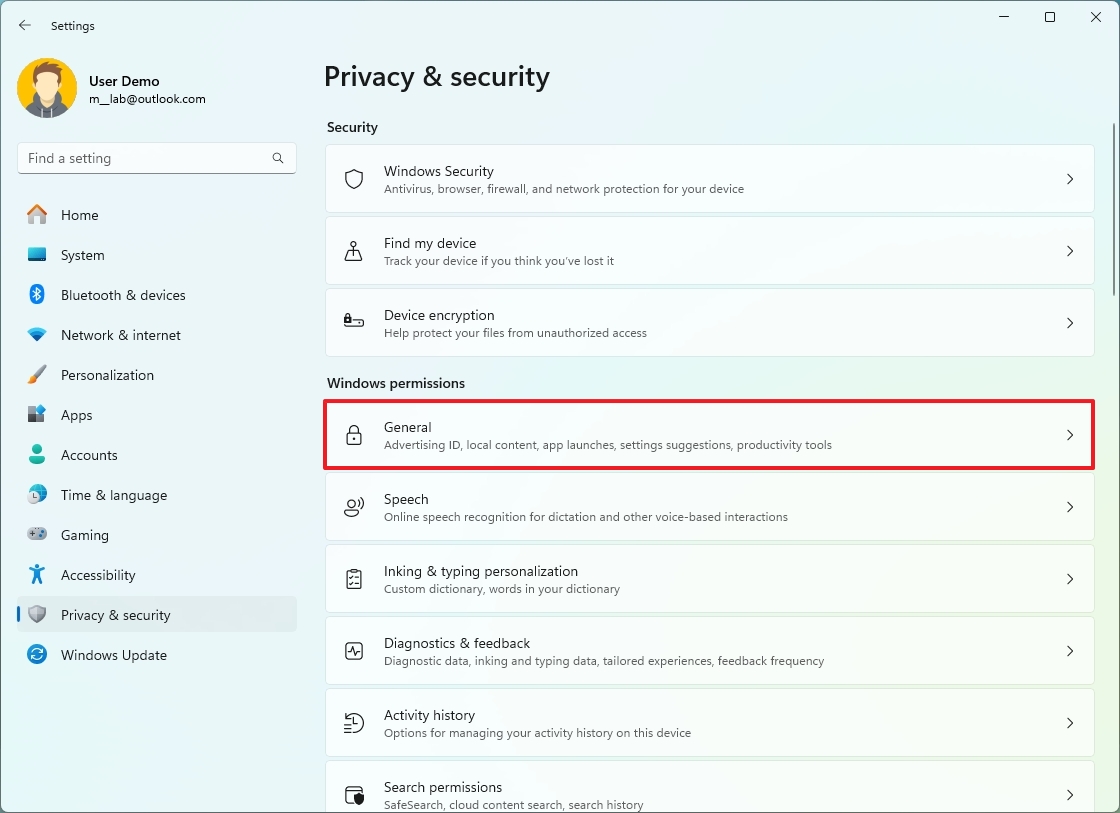
- Turn off the “Show me suggested content in the Settings app” toggle switch.
- Turn off the “Show me notifications in the Settings app” toggle switch.
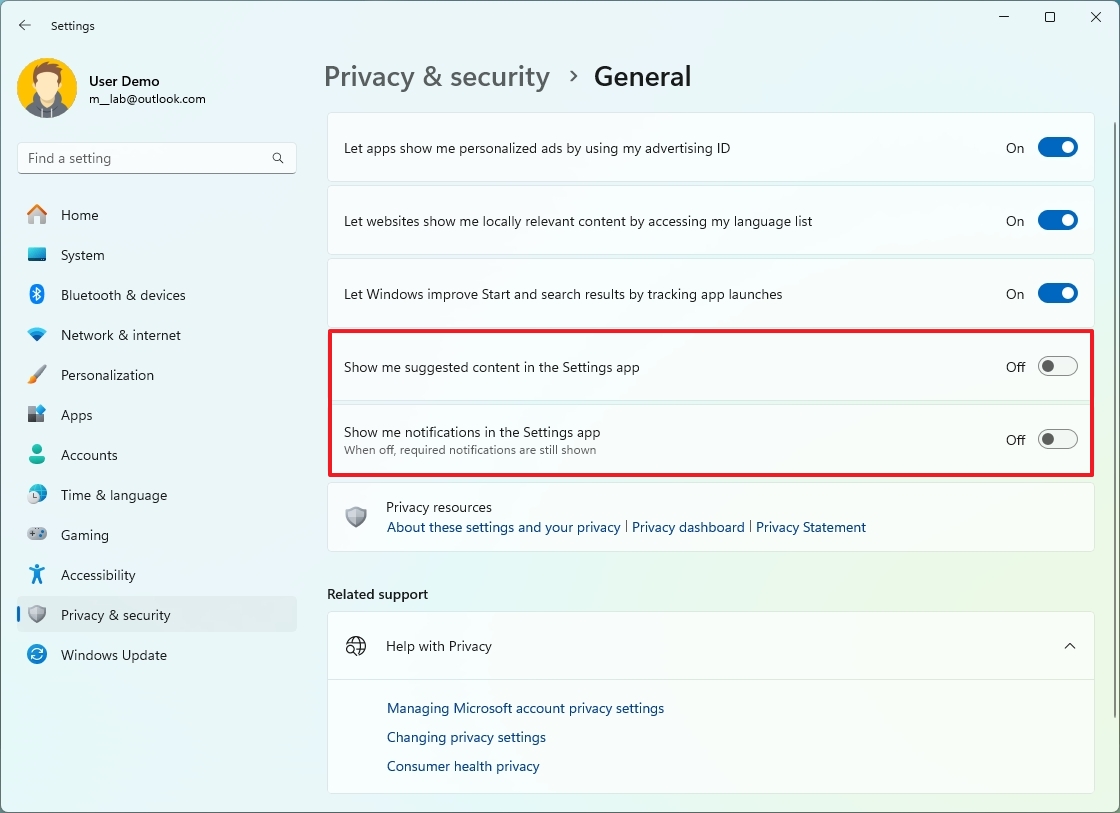
Once you finish the outlined procedures, you won’t find content recommendations or alerts appearing within the Settings app anymore. (Please note that this setting doesn’t affect account-related notifications.)
Connect phone
To fully utilize the various features on Windows 11 when connected with your mobile device, you’ll need to establish a connection in two distinct methods. Using the Phone Link app, for instance, enables you to view your Android phone’s photos, messages, alerts, and other content directly on your computer.
Instead, when you utilize the Mobile Devices function, you’ll be able to treat your phone as if it were physically connected via a USB cable, allowing you to browse its storage using File Explorer. Additionally, you can employ your phone’s camera for wireless webcam functionality on Windows 11.
Phone Link
To connect your Android phone to your computer with the Phone Link app, use these steps:
- Open the Phone Link app on your phone.
- Click the Android button.
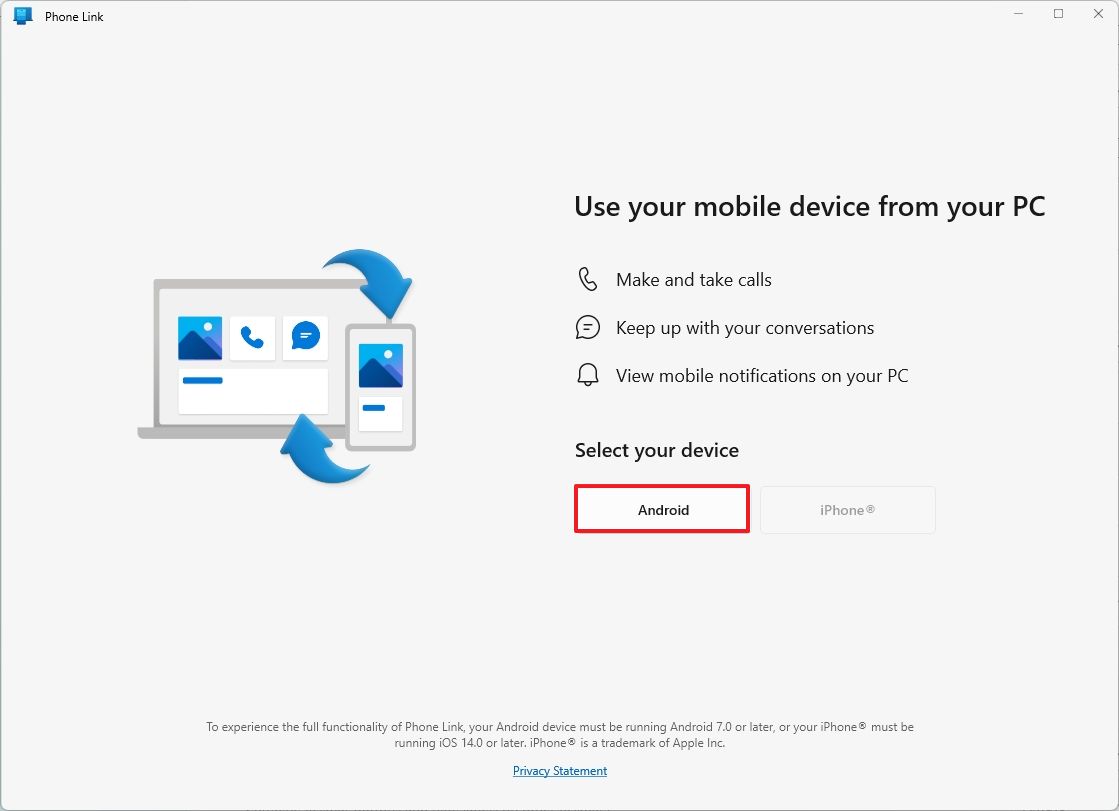
- Sign in with your Microsoft account (if applicable).
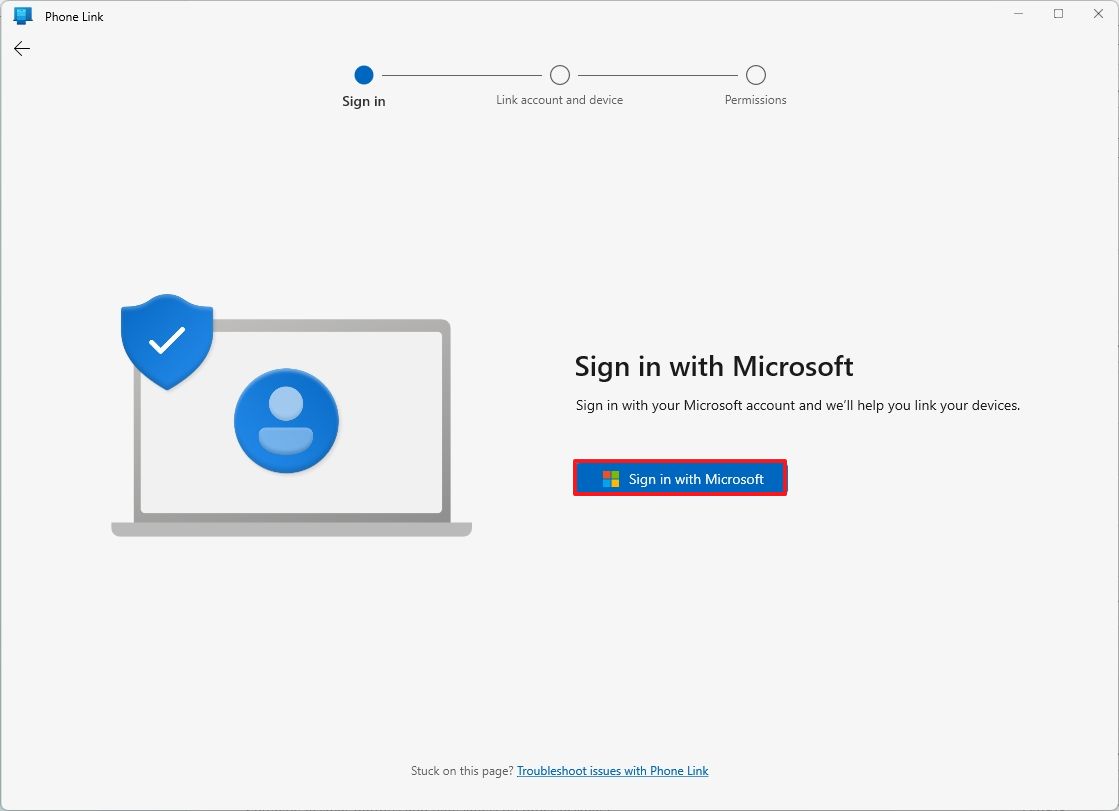
- Scan the QR Code with your Android device.
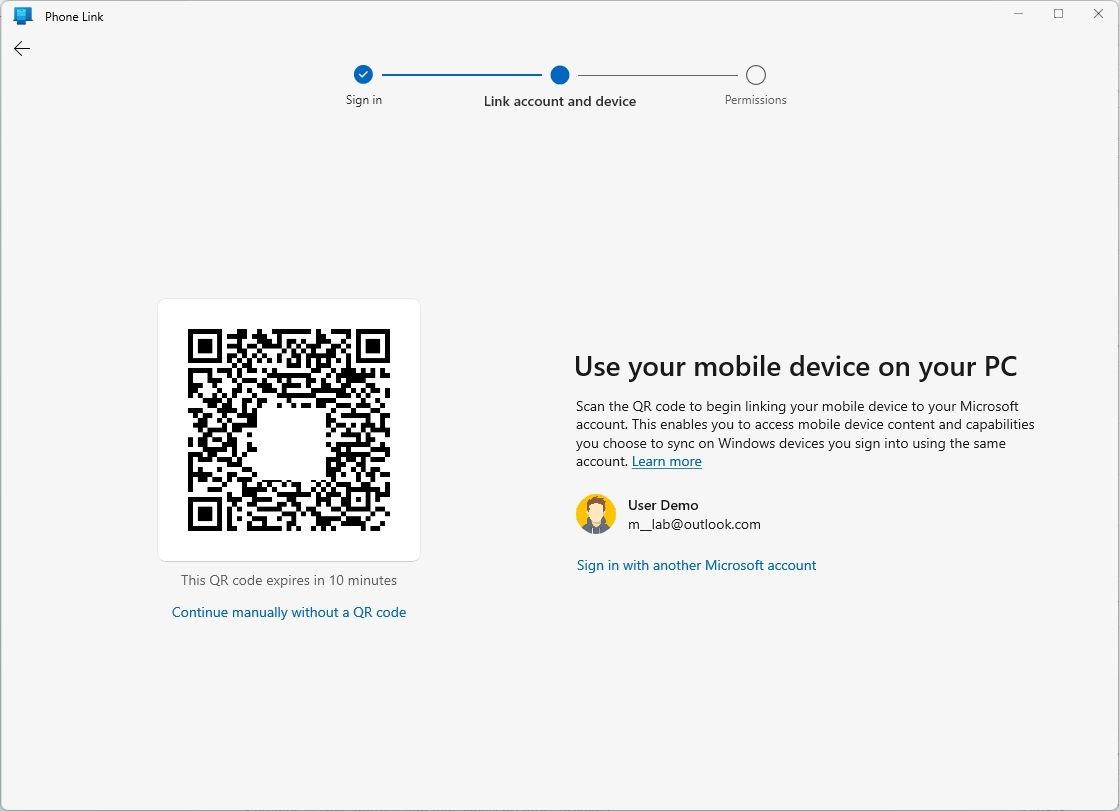
- Continue with the on-screen directions to complete the setup.
After finishing the necessary procedures, you’ll have the ability to view your phone photos and additional data using the Phone Link application. Furthermore, this process allows for both sending and receiving text messages and calls.
Mobile devices
To connect your Android phone to your computer with the Mobile devices feature, use these steps:
- Open Settings.
- Click on Bluetooth & devices.
- Click the Mobile devices page on the right side.
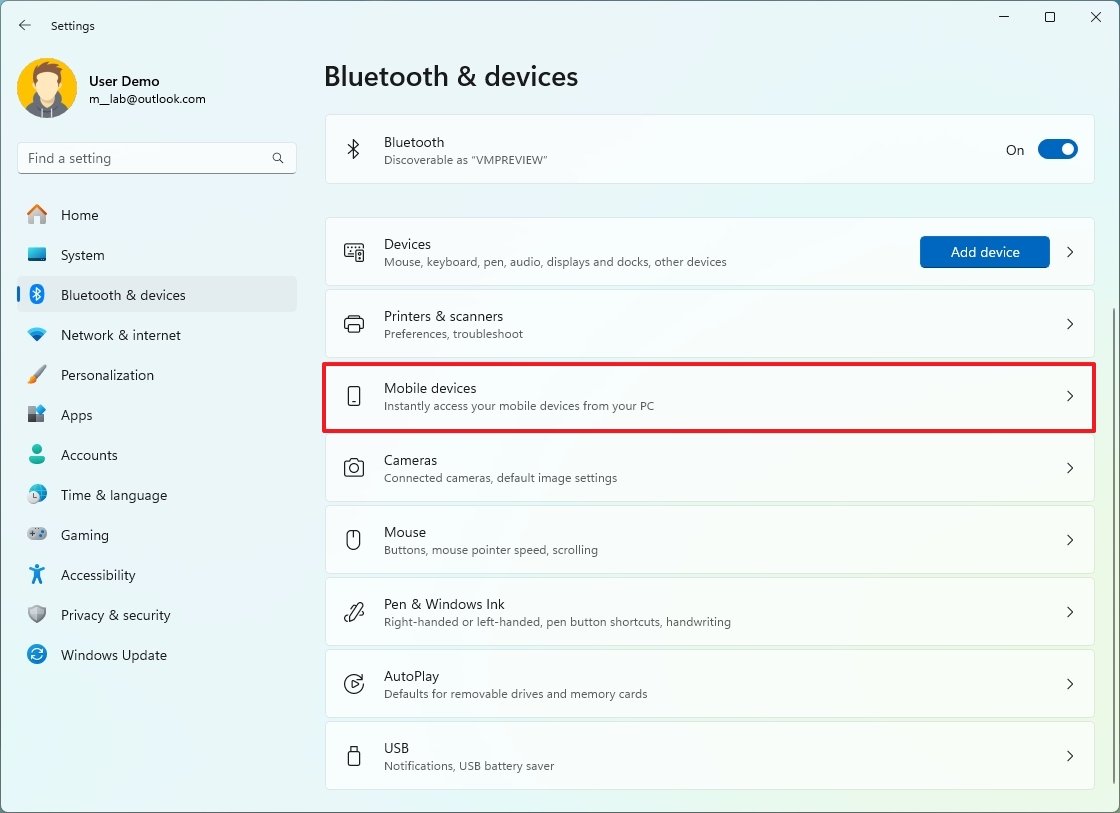
- Turn on the “Allow this PC to access your mobile devices” toggle switch.
- Click the Manage devices button.
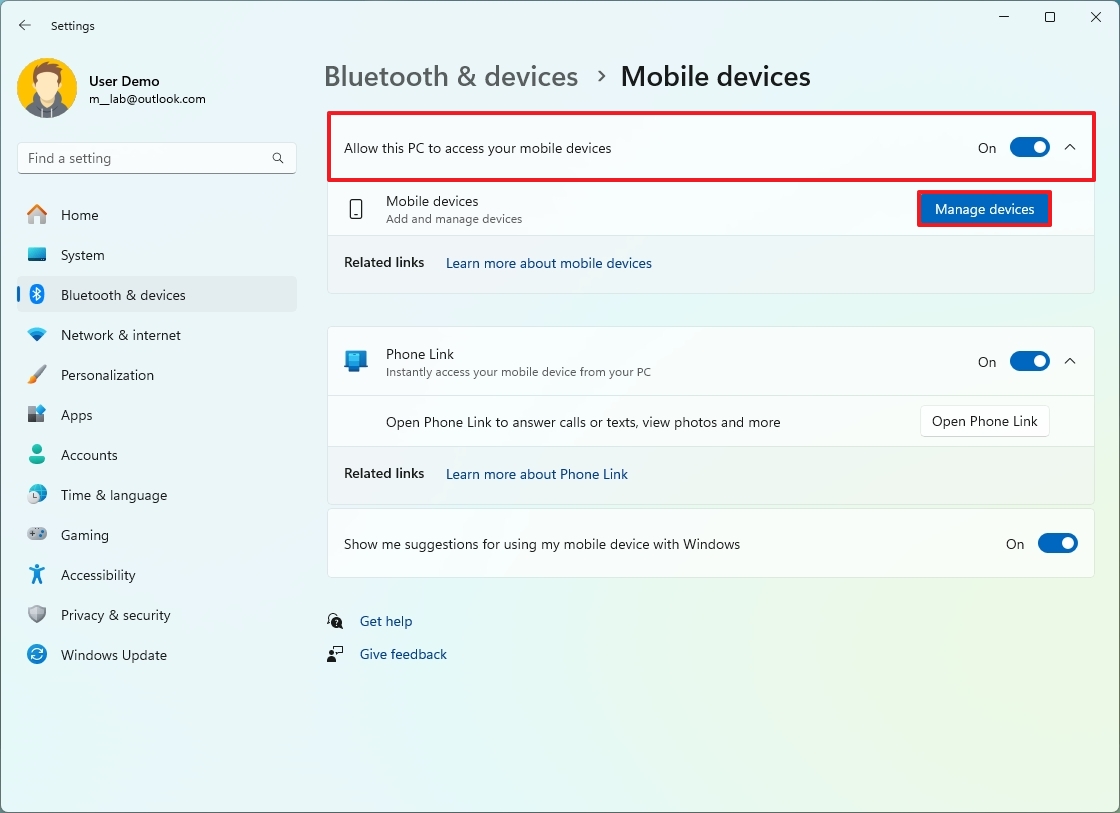
- Sign in with your Microsoft account.
- Turn on the toggle switch to connect your phone.
- Turn on the “Use as a connected camera” toggle switch to use your phone camera as your computer’s webcam.
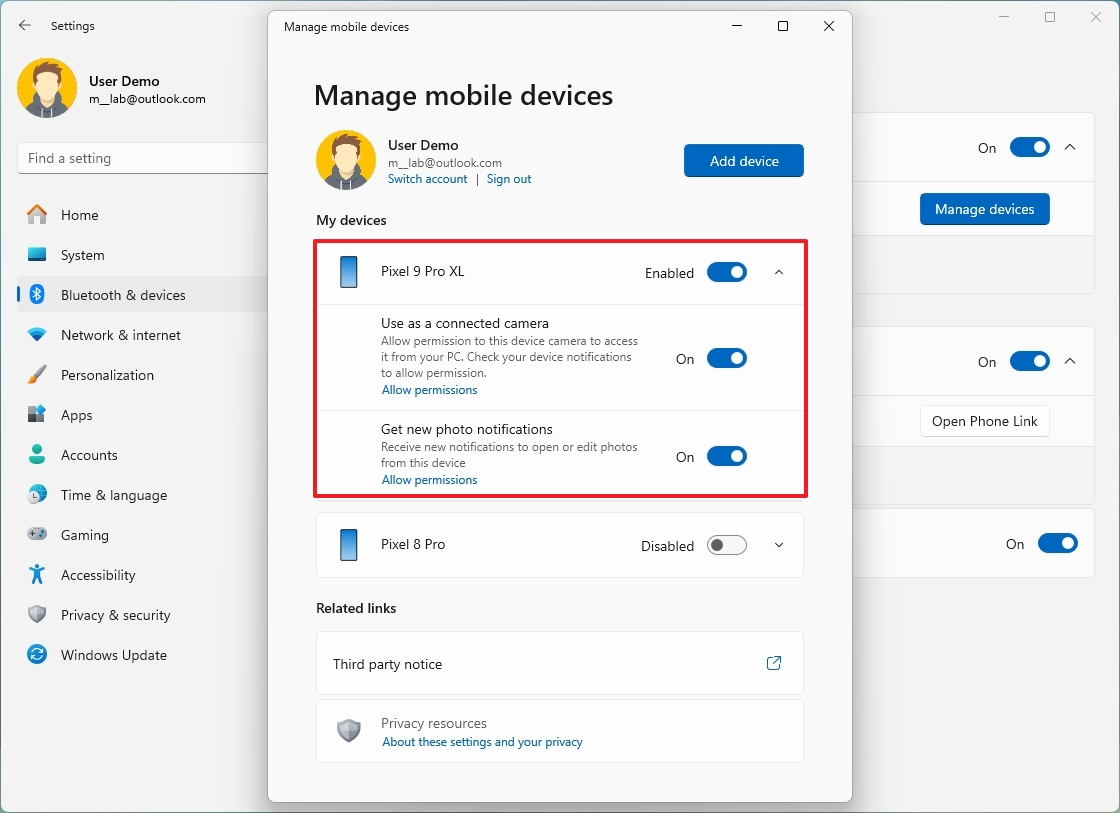
- Turn on the “Show mobile device in File Explorer” toggle switch.
- Quick note: This option may only appear if you have Windows 11 version 24H2 installed on your computer.
After following the given instructions, your smartphone’s camera should show up as an option among available devices for webcam usage on your computer. To verify its functionality, you can utilize the built-in Camera application on Windows 11.
When you enable file sharing for your Android device, it becomes visible on your computer’s File Explorer within the left navigation panel.
File Explorer
Rather than using File Explorer’s default settings, I typically customize it by setting my starting point as “This PC” and enabling the option to display file extensions.
Change startup page
To change the startup page on File Explorer, use these steps:
- Open File Explorer.
- Open the main menu (three dots) button from the command bar.
- Click on Options.
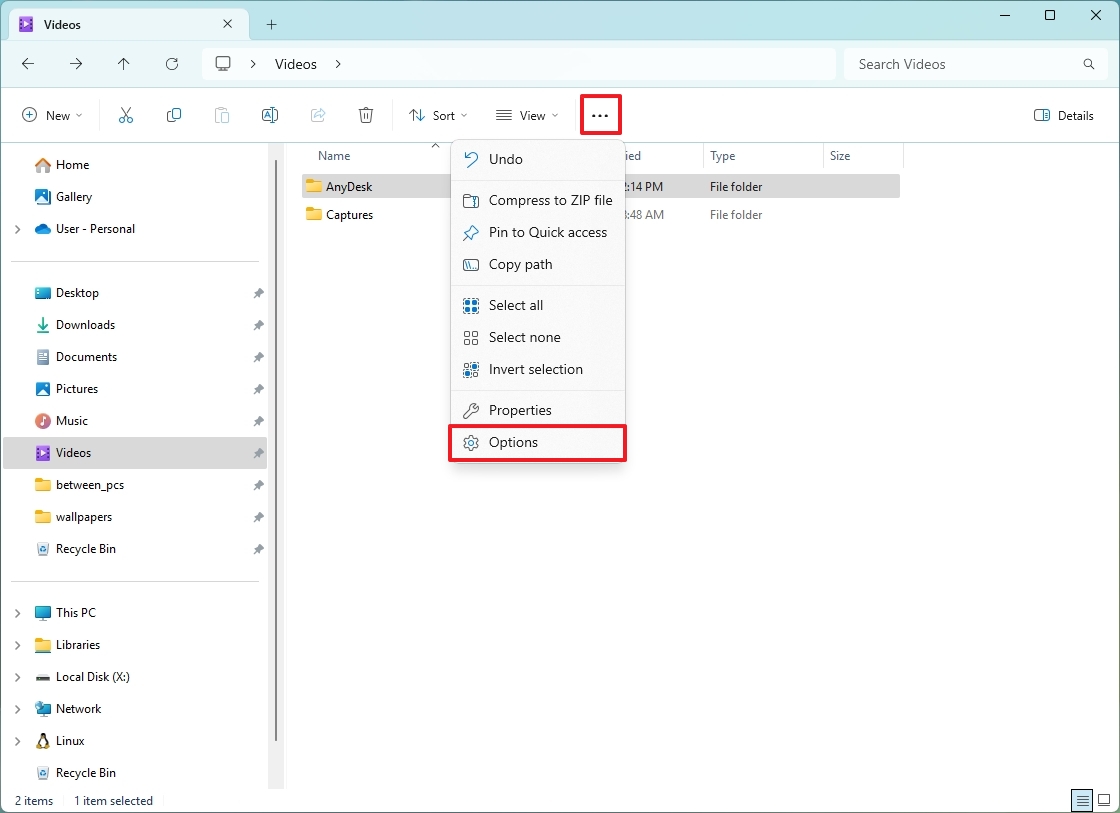
- Click the General tab.
- Select the page you want to start. For example, This PC.
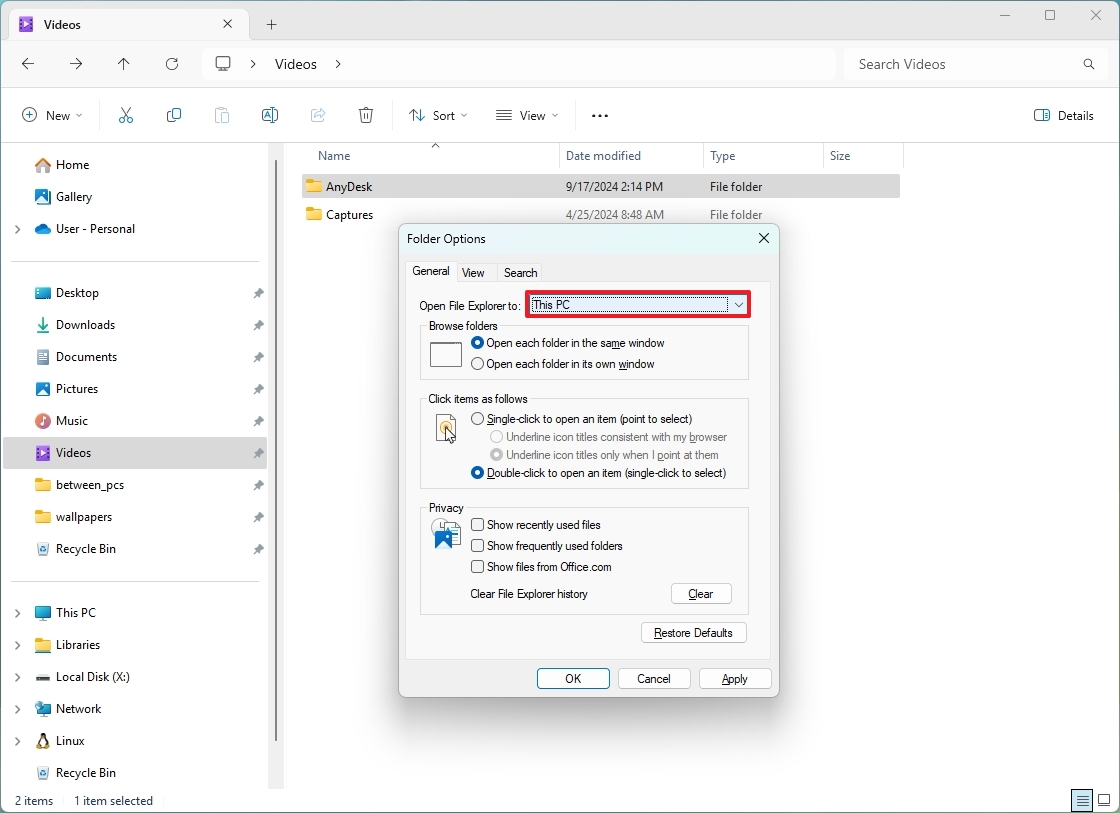
- Click the Apply button.
- Click the OK button.
After you complete the steps, File Explorer will start directly in the “This PC” page.
Show file extensions
To show file extensions on File Explorer, use these steps:
- Open File Explorer.
- Open the View menu button from the command bar.
- Select the Show submenu and choose the “File name extensions” option.

Once you complete the steps, you will be able to see extensions for files on File Explorer.
Mouse
Ultimately, rather than sticking with the standard color palette for my mouse pointer and cursor, I typically opt to activate and customize the “Pointer Style” option. This feature, originally created as an aid for accessibility, is versatile enough to be utilized by everyone.
To change the mouse cursor and pointer style, use these steps:
- Open Settings.
- Click on Accessbility.
- Click the “Mouse pointer and touch” page from the right side.

- Click the Custom option in the “Mouse pinter style” setting.
- (Option 1) Select from one of the available colors.

- (Option 2) Click the “Choose another color” option and create a new color.
After you complete the steps, the new color scheme will apply to the pointer and mouse cursor.
This is a personal configuration, and it doesn’t represent every setting you must customize for the most optimal experience on your computer. The best configuration would be up to configure since we all have different preferences and requirements.
“What specific adjustments do you usually make on your devices? Can you share any unique practices or habits you follow? Feel free to discuss them in the comments section.
More resources
Read More
- How to watch A Complete Unknown – is it streaming?
- COW PREDICTION. COW cryptocurrency
- RLC PREDICTION. RLC cryptocurrency
- USD MXN PREDICTION
- CRV PREDICTION. CRV cryptocurrency
- OM PREDICTION. OM cryptocurrency
- XDC PREDICTION. XDC cryptocurrency
- USD VES PREDICTION
- FIL PREDICTION. FIL cryptocurrency
- KSM PREDICTION. KSM cryptocurrency
2024-09-24 18:42